
De la postmodernité en Amérique
par Georges FELTIN-TRACOL
En 1835, après un long séjour aux États-Unis où il avait l’intention d’étudier le système carcéral, Alexis de Tocqueville accéda vite à la gloire littéraire avec son essai sur De la démocratie en Amérique. Dans une remarquable biographie intellectuelle qui lui est consacré, Lucien Jaume propose l’hypothèse que Tocqueville regarde en creux la France de son époque (1).
Ancien dissident anticommuniste du temps de la Yougoslavie, réfugié politique aux États-Unis dont il a acquis la citoyenneté, ex-diplomate de la jeune Croatie indépendante et penseur anticonformiste reconnu, Tomislav Sunic publie enfin en français son Homo americanus. Saluons la belle traduction de Claude Martin et l’excellente initiative des courageuses éditions Akribeia de faire paraître cet ouvrage.
Rédigé directement en anglais et sorti en 2007, Homo americanus pourrait s’adresser en premier lieu aux Étatsuniens (2). Néanmoins, du fait de l’expansion planétaire de l’American way of life, voire aux nouveaux États développés, son propos concerne aussi les autres peuples dont les Européens.
La problématique postmoderne
Tomislav Sunic scrute la société étatsunienne en prise avec la postmodernité. Toutefois, le concept conserve une grande ambiguïté. « Dans un monde en mutation, un nouveau mot est entré dans l’usage à la fin du XXe siècle, celui de “ postmodernité ”. Ce mot imprécis, mais aussi quelque peu snob, est de plus en plus utilisé pour décrire l’Amérique et l’américanisme (pp. 59 – 60). » L’auteur donne au terme une réelle connotation négative. Il reconnaît que « la postmodernité est à la fois une rupture avec la modernité et son prolongement logique dans une forme hypertrophiée (p. 226) ». Il ajoute aussitôt que « la postmodernité est l’hypermodernité, dans la mesure où les moyens de communication rendent méconnaissables et disproportionnés les signes politiques (p. 227) ».
Il est évident que la notion de postmodernité garde une forte polysémie. Tomislav Sunic paraît ici très (trop ?) influencé par l’œuvre « chirurgicale » et « aseptisée » de Jean Baudrillard. Il semble en revanche totalement méconnaître les écrits de Michel Maffesoli qui envisage le fait postmoderne avec une sympathie certaine (3). Maffesoli juge la Post-Modernité dionysiaque, fluctuante, erratique et orgiaque, nullement clinique et glacée !
Pour notre part, au risque de verser dans la tautologie, osons distinguer la Post-Modernité en gestation qui peut se concevoir comme une remise en cause radicale du discours moderne anthropocentrique, y compris dans la présente phase tardive, d’un postmodernisme relevant d’un masque grossier d’une néo-modernité, d’une hyper-modernité ou d’une ultra-modernité au déchaînement titanesque. Cette dernière modernité porte à son paroxysme, à son incandescence, des valeurs subversives à l’œuvre depuis l’ère des Lumières au moins. Si la Post-Modernité s’ouvre à des Figures archétypales incarnées par Dionysos, Apollon, Faust ou Hercule à la rigueur, le postmodernisme demeure, lui, foncièrement attaché à Prométhée et correspond pleinement à l’ethos d’Homo americanus tant il est vrai que « le langage postmoderne ne s’est pas écarté d’un pouce des dogmes inébranlables des Lumières, c’est-à-dire de sa croyance à l’égalitarisme et au progrès économique illimité. On peut donc affirmer que la postmodernité est un oxymore historique, un mot à la mode qui dissimule habilement le mensonge intellectuel (p. 221) ». Une postmodernité négative irradie donc les États-Unis. « Au début de la postmodernité, à la fin du XXe siècle, le conformisme américain s’est révélé être la structure sociale idéale pour assurer le fonctionnement parfait d’une société hautement industrialisée. Les partisans européens de la société traditionnelle et organique, aussi connus sous le nom de traditionalistes, nationalistes, conservateurs révolutionnaires nationaux, etc., nous prévient Sunic, devraient donc réfléchir à deux fois avant de reprocher à l’Amérique de constituer une menace pour la mémoire historique. Dans un système postmoderne mondial qui repose sur le satellite et les réseaux à fibre optique et sur une mentalité numérique en mutation rapide, l’ancien discours conservateur européen doit être réexaminé. C’est précisément le sentiment de conformisme social qui donna aux Américains cette grande aptitude au travail en équipe et à la solidarité fonctionnelle qui ne se rencontre pas en Europe et qui, cependant, est indispensable au bon fonctionnement d’un système postmoderne (p. 45). » La Post-Modernité est une invitation aux rectifications salutaires…
En fin observateur des sociétés développées et mettant à profit son expérience d’avoir grandi dans une société communiste titiste, Tomislav Sunic n’hésite pas à se référer aux écrits d’un autre Européen, fuyant lui aussi le communisme, et qui se montra toujours dubitatif face à la société qui l’avait accueilli, le Hongrois Thomas Molnar, auteur d’un prodigieux livre sur L’Américanologie (4). Il « espère […] que ce livre sera une bonne introduction pour de futures études de l’américanisme (p. 9) ».
Qu’est-ce que l’américanisme ?
Afin correctement saisir l’objet de sa recherche, Tomislav Sunic utilise les expressions d’américanisme et d’Homo americanus. Clin d’œil complice à Homo sovieticus forgé par le dissident soviétique Alexandre Zinoviev, il sait que « le néologisme à l’étymologie latine Homo americanus peut désigner de façon péjorative l’Américain et son mode de vie (p. 41) ». Mais qu’entend-il par américanisme ? Ce mot « a un sens légèrement péjoratif et est plus souvent utilisé en Europe qu’en Amérique du Nord. En général, le mot “ américanisme ” désigne un ensemble de croyances quotidiennes et de modes de vie ainsi que le langage américain – qui tous pourraient être décrits comme des éléments de l’idéologie américaine (p. 41) ». Il ose employer le terme d’idéologie pour mieux expliquer les mécanismes étatsuniens, n’en déplaise à tous les libéraux et autres américanomanes et américanolâtres qui y voient une forme de Paradis terrestre.
Oui, « l’américanisme est un système idéologique fondé sur une vérité unique; un système décrit dans l’Ancien Testament et dans lequel l’ennemi doit être assimilé au mal – un ennemi qui, en conséquence, doit être exterminé physiquement. Bref, l’universalisme judéo-chrétien pratiqué en Amérique dans ses divers dérivés multiculturels et séculiers, ouvrit la voie aux aberrations égalitaires postmodernes et à la promiscuité totale de toutes les valeurs (p. 174, souligné par nous) ». L’auteur insiste en outre sur le fait que « l’américanisme n’a jamais été le fondement administratif du système politique américain, pas plus qu’il ne s’est implanté uniquement parmi les membres des élites politiques de Washington. L’américanisme, en tant que dénominateur commun de l’égalitarisme parfait, transcende les différents modes de vie, les différentes attaches politiques et les différentes confessions religieuses (pp. 86 – 87) ». « On pourrait ajouter, poursuit Sunic, que le monde américain globalisé et désenchanté, joint à la litanie des droits de l’homme, à la société œcuménique et multiraciale et à l’« État de droit », comporte des principes que l’on peut faire remonter directement au messianisme judéo-chrétien et qui refont surface aujourd’hui dans des formes profanes, sous l’habit élégant de l’idéologie américaine (p. 182, souligné par nous). »
Il est vrai que l’« Amérique » procède du calvinisme et, en particulier, de sa dissidence puritaine. Implanté en Nouvelle-Angleterre, « le puritanisme avait donné naissance à un type propre de fanatisme américain qui n’a pas d’équivalent nulle part ailleurs dans le monde (p. 201) ». Or les auteurs de la Tradition incriminent la Réforme du XVIe siècle parmi les facteurs d’avènement de la Modernité.
L’esprit puritain a modelé la psychologie d’Homo americanus. Sans exagérer, on pourrait dire que, pour détourner une analogie chère à Jules Monnerot pour qui le communisme était l’islam du XXe siècle (5), le puritanisme est l’islamisme de l’Occident. En effet, Tomislav Sunic note avec raison que « la différence entre l’américanisme et l’islamisme quant à l’agressivité et au fondamentalisme semble cependant marginale. Tous deux aspirent à créer une civilisation mondiale, bien qu’usant d’un ensemble de valeurs différent. Tous deux désirent vivement convertir les non-croyants à leur seule cause (p. 218) ».
La terre bénie de Prométhée
Tomislav Sunic revient sur l’influence majeure des puritains anglais dans la postérité mentale des États-Unis. Le succès historique du modèle de leur modèle ne s’explique-t-il pas par la stricte application du protestantisme bien analysé par le sociologue allemand Max Weber (6) ? Il est établi que « l’Amérique est un pays caractérisé par un intégrisme religieux extrême, celui-ci étant cependant parfaitement compatible avec les entreprises capitalistes les plus brutales (p. 151) ». On est ici en présence d’une alliance (inattendue ?) entre Prométhée et le puritain au point que « la Bible et les affaires devinrent les deux piliers de l’américanisme (p. 153) ». Ce n’est pas pour rien que « l’Amérique est le pays de la Bible (p. 147) ». Et si les États-Unis n’étaient pas au fond la réalisation post-anglaise du projet de Cromwell ?
L’auteur a tort de mésestimer l’importance historique du Lord-Protector du Commonwealth d’Angleterre, d’Écosse et d’Irlande (1649 – 1660). Pour lui, « Oliver Cromwell apparaît comme une étoile filante qui ne laissa pas d’empreinte durable sur l’avenir du Royaume-Uni ou de l’Europe continentale (p. 148) ». Pourtant, en 1651, par l’Acte de Navigation, Cromwell poursuit et accentue la politique de puissance navale voulue par Élisabeth Ire, ce qui détache définitivement les Îles britanniques de l’orbe européen pour le Grand Large. Dorénavant, quelque soit le régime, Londres recherchera sur le Vieux Monde un équilibre entre puissances continentales et ambitionnera à bâtir sur les océans une hégémonie thalassocratique totale. On retrouve dans cette ambition géopolitique le prométhéisme que reprendra plus tard Washington.
En prométhéen volontariste, Homo americanus veut maîtriser son monde et l’utiliser, le rentabiliser. Ce type diffère de la matrice européenne. « Si l’on accepte [la thèse de Charles A. Beard], on peut alors en conclure que les citoyens américains, par suite de deux cents de sélection sociale et biologique, constituent aujourd’hui un type infra-européen particulier qui, même si son phénotype semble européen, a propension à se comporter comme un agent économique. […] On peut donc utiliser Homo economicus comme un synonyme d’Homo americanus, étant donné que les Américains postmodernes se concentrent exclusivement sur l’accumulation de marchandises, au point de devenir eux-mêmes des marchandises périssables (p. 67). »
Prométhéenne est donc la genèse du peuple des États-Unis. « On pourrait fort bien soutenir que la création de l’Amérique fut le résultat de la volonté de puissance suprême du génie européen, c’est-à-dire une forme ultime de prométhéisme européen, quelque chose d’inconnu dans les autres civilisations et de sans précédent dans toute l’histoire occidentale (pp. 43 – 44). » « Certes, l’Amérique, assure Sunic, est le pays le moins homogène de l’hémisphère occidental quant à l’origine de ses citoyens, à leurs modes de vie et aux rêves qu’ils nourrissent. Cependant, quelle que soit leur origine raciale et sociale ou leur situation, les Américains possèdent un trait commun caractéristique, à savoir le rejet de leurs racines, même si ce rejet peut traduire un désir secret de se re-projeter dans ce qu’ils étaient précédemment ou dans des racines enjolivées (pp. 42 – 43). » N’oublions jamais que cette Amérique-là s’est construite contre l’Europe, contrairement à l’Argentine, par exemple, qui synthétise l’Espagne et l’Italie et qui s’apprécie en tant que continuation de l’esprit européen dans le Nouveau Monde.
L’impératif puritain associé plus tard aux Lumières du XVIIIe siècle détache fatalement les futurs États-Unis de l’ensemble européen. La rupture avec la Couronne britannique concrétise cet éloignement définitif. Néanmoins, « on peut aussi soutenir, d’un point de vue racialiste et sociobiologique, que les premiers Américains, au moins jusqu’au milieu du XIXe siècle, constituaient un patrimoine héréditaire capable d’essuyer, au propre comme au figuré, les tempêtes que ceux qui étaient restés derrière eux en Europe, particulièrement aux XVIIIe et XIXe siècles, ne furent pas capables d’affronter, ni physiquement ni affectivement. “ Surhommes ” outre-Atlantique, les premiers Américains ont dû faire preuve d’une grande résistance physique pour répondre à la “ sélection naturelle ” dans leur nouvelle patrie. Il est incontestable que les rigueurs du climat et une vie difficile pleine d’impondérables dans l’Ouest de cette époque ont dû provoquer une sélection sociobiologique qui, avec le temps, donna naissance au fameux type américain. Les clivages sociaux entre et parmi les Américains, leur mobilité sociale sans précédent et leur profusion de modes de vie différents rendent donc impossible out stéréotype préconçu d’une espèce américaine “ unique ”, à savoir Homo americanus (p. 44) ». Cette dernière assertion est-elle vraiment fondée ? Homo americanus surgit du creuset fondateur des XVIIe et XVIIIe siècles, façonné à la fois par la lecture quotidienne de la Bible et de l’Encyclopédie. Pour mieux cerner cette idiosyncrasie nouvelle, américaine, Tomislav Sunic aurait pu mentionner les fameuses Lettres d’un cultivateur américain de Michel-Guillaume de Crèvecoeur. Ce témoin exceptionnel des débuts de l’homme américain montre que l’Américain est en réalité « un mélange d’Anglais, d’Écossais, d’Irlandais, de Français, de Hollandais, d’Allemands, de Suédois. De ce fonds bigarré, cette race qu’on appelle les Américains est née. […] Dans ce grand asile américain, les pauvres de l’Europe, par quelque moyen que ce soit, se sont rencontrés […]. Il est en même temps un Européen, de là cet étrange mélange de sang que nous ne trouverez dans aucun autre pays. […] Il est un Américain celui qui, laissant derrière lui tous ses anciens préjugés et ses anciennes manières, en prend de nouveaux dans le genre de vie qu’il a choisi, dans le nouveau gouvernement auquel il se soumet, dans la nouvelle charge qu’il occupe. […] Ici, les individus de toutes le s nations sont brassés et transformés en une nouvelle race d’hommes, dont les travaux et la postérité causeront un jour de grands changements dans le monde. L’Américain est un nouvel homme, qui agit selon de nouveaux principes; il doit par conséquent nourrir de nouvelles idées et se former de nouvelles opinions (7) ».
Malgré des flux consécutifs d’immigration aux XIXe et XXe siècles, la maturation psychique des États-Unis s’élabore dès l’époque des Lumières. Considérant que « la géographie est le destin de l’Amérique (p. 194) », les Insurgents, lecteurs des Philosophes et connaisseurs des révolutions anglaises du siècle précédent (celle de Cromwell et de la « Glorieuse Révolution » de 1688 – 1689), appliquent à leur nouvel espace les théories de l’Encyclopédie, y compris les plus égalitaires. Quand en France l’Assemblée Nationale Constituante (1789 – 1791) souhaite remplacer les cadres administratifs complexes de l’Ancien Régime (les provinces, les pays d’États et d’élection, les généralités) par les départements, certains constituants entendent diviser le territoire français par un quadrillage géométrique. Finalement, l’Assemblée entérine une solution plus adaptée aux finages, au relief et aux particularités paysagères locales. Ce désir de géométrisation du territoire se retrouve aux États-Unis avec le township qui est l’unité cadastrale de base du maillage mis en place en 1785 à l’Ouest des Appalaches. Il s’agit d’un découpage de 6 à 54 miles carrés (soit 15,6 km2 à 140,4 km2) qui se divise souvent en trente-six sections et qui permet la délimitation tant administrative qu’agricole des espaces de l’Ouest. Pourquoi les États fédérés ont-ils une forme assez géométrique ? Pourquoi le Texas, par exemple, a-t-il des angles droits à ses frontières ? Il n’y a pas de mystère. Ce n’est que l’application du township quelque peu modifié parfois par la présence d’obstacles naturels comme la partie septentrionale de l’Idaho avec les Montagnes Rocheuses. Le township symbolise la volonté des esprits éclairés de rationaliser l’espace géographique afin de préserver la meilleure égalité possible au sein de l’Union.
Des frères jumeaux égalitaristes
Nonobstant leurs nombreuses grandes fortunes, les États-Unis se réclament toujours de l’égalité et de ses succédanés contemporains (la discrimination positive, l’antiracisme). « L’idéologie américaine interdit l’essor des valeurs éthiques et politiques qui justifient les différences hiérarchiques, telles qu’elles existaient au Moyen Âge (p. 271) ». Pire, « après la disparition de l’Union soviétique, des traits cryptocommunistes, qui étaient latents au sein de l’américanisme ou avaient été soigneusement dissimulés durant la guerre froide, commencèrent subitement à apparaître. Il fallait s’y attendre, étant donné que l’Amérique, tout comme l’ex-Union soviétique, s’ancre juridiquement dans les mêmes principes égalitaires (pp. 79 – 80) ». Fort de son vécu dans le monde communiste, Tomislav Sunic attribue à Homo americanus et à Homo sovieticus une gémellité irréfragable : « la propension égalitaire, qui s’observait naguère chez l’Homo sovieticus communiste, est bien en marche et porte un nouveau nom en Amérique et dans l’Europe américanisée (p. 270) ».
Quitte à soulever l’indignation des bien-pensants, Tomislav Sunic estime que « les deux systèmes s’efforcèrent de créer un “ homme nouveau ”, délesté de son encombrant passé et prêt à entrer dans un monde insouciant et blasé à l’avenir égalitaire radieux (p. 80) ». « C’est donc une erreur de croire que le discours dominant sur l’égalité, accompagné du principe chiliastique de l’espérance, disparaîtra parce que l’Union soviétique communiste a disparu. Bien au contraire. En ce début de troisième millénaire, l’immense métarécit égalitaire, incarné par l’américanisme, est toujours en vie et actif, ce qui est particulièrement manifeste dans l’Université et dans les grands médias américains. La croyance utopique à l’égalité constitue le dernier grand espoir de millions de nouveaux arrivants non européens installés en Amérique (p. 82). » Ces millions d’immigrés, clandestins ou non, qui arrivent aux États-Unis restent fascinés par l’image qu’on leur en donne à travers les feuilletons télévisés et autres soaps sous-culturels. On arrive au moment crucial « que l’Amérique bien qu’elle soit une utopie qui s’est réalisée au début du XXIe siècle, demeure une utopie bancale, uniquement destinée aux immigrants du tiers-monde (p. 99) ». Il existait naguère une autre utopie réalisée quoique imparfaite qui se fracassa finalement sur la réalité : l’U.R.S.S.
Les États-Unis d’Amérique ne seraient-ils pas une Union soviétique occidentale ? La comparaison, osée certes, se justifie, car « il ne faut pas oublier que le communisme, tel qu’il fut mis en pratique en Russie et en Europe de l’Est, avait été conçu dans les universités d’Europe de l’Ouest et d’Amérique (p. 100) ». Le caractère soviétique des U.S.A. (ou les traits américanistes de l’U.R.S.S.) devient évident quand, d’une part, « les deux systèmes – l’un révolu, l’autre toujours présent, sous couvert de démocratie, de progrès et de croissance économique illimitée – ont été fondés sur la notion philosophique de finitude et ont exclu les autres solutions idéologiques (p. 75) » et, d’autre part, « Homo sovieticus et Homo americanus furent et sont toujours tous deux des produits du rationalisme, des Lumières, de l’égalitarisme et de la croyance au progrès. Ils croient tous deux à un avenir radieux. Tous deux claironnent le slogan selon lequel tous les hommes sont créés égaux (p. 108) ».
L’ère moderne n’étant pas achevé, il est cohérent que le type américain atteigne un nouveau palier d’évolution (ou d’involution). « Après la fin de la guerre froide et, en particulier, après le choc provoqué par l’attentat terroriste du 11 septembre 2001 contre l’Amérique, Homo americanus s’est transformé en un type mondial postmoderne achevé qui, bien qu’originaire des États-Unis, se développe aujourd’hui dans toutes les parties du monde. Il ne se limite plus au territoire des États-Unis ou à une région spécifique du monde mais est devenu un type mondial complet, comparable à son ancien frère jumeau et pendant, Homo sovieticus, qui a achevé lamentablement son parcours historique (p. 83). » Homo americanus serait-il donc l’agent conscient et volontaire de l’État universel à venir ? Très probablement. Il n’y a qu’à voir « la Chine [qui] est un exemple concret d’une gigantesque société de masse qui a réussi à conjuguer avec pragmatisme économie planifiée et économie de marché. Il est probable que l’Amérique se livre à une expérience socio-économique similaire dans les prochaines années (p. 89) ».
L’Amérique-monde
L’expression « Amérique-monde » revient à l’essayiste néo-conservateur, ultra-libéral et ancien gauchiste hexagonal Guy Millière (8). Comme naguère l’U.R.S.S., les États-Unis véhiculent un messianisme séculier profondément puritain.
Tomislav Sunic pense toutefois que « c’est souvent contre sa propre volonté que l’Amérique est devenue une superpuissance militaire (p. 45) ». C’est une appréciation contestable. Une fois la conquête de l’Ouest achevé aux dépens des tribus amérindiennes exterminées et des Mexicains refoulés, dès la fin du XIXe siècle, Washington prend de l’assurance et s’affirme sur la scène internationale en tant que puissance montante. Qui sait qu’en 1914, les États-Unis sont déjà le premier créancier des États européens ? Si c’est sous la présidence fortuite de Théodore Roosevelt (1901 – 1909) que les États-Unis se lancent dans une forme de colonialisme, ils avaient déjà acheté en 1868 l’Alaska à la Russie. L’année 1898 est déterminante dans leur expansionnisme avec l’annexion des îles Hawaï et la guerre contre l’Espagne qui fait tomber dans leur escarcelle étoilée Cuba, les Philippines et l’île océanienne de Guam. En 1905, Roosevelt sert d’intermédiaire dans la résolution du conflit russo-japonais et envoie régulièrement les Marines en Amérique latine.
Contrairement aux sempiternels clichés, l’isolationnisme et l’interventionnisme ne sont que les deux facettes d’une seule et même finalité dans les relations internationales : la suprématie mondiale et la promotion du « modèle américain ». Les États-Unis se pensent comme nouveau « peuple élu » à l’échelle du monde ! Tomislav Sunic rappelle que « les mythes fondateurs américains s’inspirèrent de la pensée hébraïque (p. 157) » et que « l’américanisme postmoderne n’est que la dernière version laïque de la mentalité juive (p. 162) ». Sur ce point précis, l’auteur semble oublier que Cromwell fut le premier dirigeant européen à entériner la présence définitive de la communauté juive considérée comme une aînée respectable. Cette judéophilie a traversé l’Atlantique. « La raison pour laquelle l’Amérique protège tant l’État d’Israël n’a pas grand-chose à voir avec la sécurité géopolitique de l’Amérique. En fait, Israël est un archétype et un réceptacle pseudo-spirituel de l’idéologie américaine et de ses Pères fondateurs puritains. Israël doit faire office de Surmoi démocratique à l’Amérique (p. 172) ». Plus loin, Sunic complète : « métaphysiquement, Israël est un lieu à l’origine spirituelle de la mission divine mondiale de l’Amérique et constitue l’incarnation de l’idéologie américaine elle-même (p. 212) ».
Les Étatsuniens ont par conséquent la certitude absolue d’avoir raison au mépris même d’une réalité têtue. Puisque « les maîtres du discours dans l’Amérique postmoderne disposent de moyens puissants pour décider du sens de la vérité historique et pour le donner dans leur propre contexte historique (p. 207) », « le système occidental moderne, qui s’incarne dans le néoprogressisme postmoderne et dont l’Amérique et son vecteur, Homo americanus, sont le fer de lance, a imposé son propre jargon, sa propre version de la vérité et son propre cadre d’analyse (p. 53) ».
Depuis 1945, l’antifascisme et le soi-disant multiculturalisme contribuent de façon consubstantielle au renouvellement permanent de l’américanisme. Les États-Unis virent dans la fin subite du bloc soviétique le signe divin de leur élection au magistère universel. Désormais, la fin de l’histoire était proche et l’apothéose de l’« Amérique » certaine. Pour Sunic, « il n’est pas exagéré de soutenir, à l’instar de certains auteurs, que le rêve américain est le modèle de la judaïté universelle, qui ne doit pas être limitée à une race ou à une tribu particulière en Amérique, comme elle l’est pour les Juifs ethnocentriques, lesquels sont bien conscients des sentiments raciaux de leur endogroupe. L’américanisme est conçu pour tous les peuples, toutes les races et les nations de la Terre. L’Amérique est, par définition, la forme élargie d’un Israël mondialisé et n’est pas réservé à une seule tribu spécifique. Cela signifie-t-il, partant, que notre fameux Homo americanus n’est qu’une réplique universelle d’Homo judaicus ? (p. 158) ». Serait-ce la raison que « le sens actuel de la postmodernité trouve en partie sa source dans ce que nous a légué la Seconde Guerre mondiale (p. 245) » ?
Il en résulte une glaciation des libertés réelles au profit d’une « liberté » incantatoire et fantasmatique. Les libertés d’opinion et d’expression se réduisent de plus en plus sous les actions criminogènes d’un « politiquement correct » d’émanation américaniste.
Un despotisme en coton
« L’hypermoralisme américain est un prêt-à-porter intemporel pour toutes les occasions et pour tous les modes de vie (p. 153). » Supposée être une terre de liberté et d’épanouissement individuel, les États-Unis en sont en réalité le mouroir dans lequel règne une ambiance de suspicion constante. « Dans le système atomisé de l’américanisme, la dispersion du pouvoir conduit inévitablement à une terreur dispersée dans laquelle la frontière entre la victime et le bourreau ne peut que disparaître (p. 268). » On atteint ici le summum de la surveillance panoptique avec un auto-contrôle mutuel idoine où tout le monde observe tout un chacun (et réciproquement !).
La mode de la « pensée conforme » se déverse en Europe où s’affirme progressivement Homo americanus. « L’Europe n’est-elle pas une excroissance de l’Amérique – quoique, du point de vue historique, de manière inversée ? Le type américain, Homo americanus, existe désormais dans toute l’Europe et a gagné en visibilité aux quatre coins de l’Europe – non seulement à l’Ouest, mais aussi à l’Est post-communiste. De là un autre paradoxe : la variante tardive d’Homo americanus, l’Homo americanus européen, semble souvent déconcentrer les Américains qui visitent l’Europe à la recherche d’un “ vrai ” Français, d’un “ vrai ” Allemand ou d’un “ vrai ” Hollandais insaisissable. À cause du processus de mondialisation et du fait que l’impérialisme culturel américain est devenu le vecteur principal d’une nouvelle hégémonie culturelle, il est de plus en plus difficile de faire la différence entre le mode de vie des citoyens américains et le mode de vie des citoyens européens (pp. 46 – 47). » Cette situation provient de l’ardente volonté de puissance géopolitique des États-Unis. Jusqu’à présent, « le grand avantage de l’Amérique est son caractère monolithique, son unité linguistique et son idéologie apatride fondée sur le concept de gouvernement mondial. C’est pour cette raison que le système américain a été jusqu’ici mieux placé que tout autre pour cultiver son hégémonie mondiale (pp. 190 – 191) ». Or, comme Samuel P. Huntington le constata avec effroi (9), la structure ethnique même des U.S.A. se brouille si bien qu’« en ce début de troisième millénaire, l’Amérique n’a d’autre choix que d’exporter son évangile démocratique universel et d’importer d’inépuisables masses d’individus non européens qui ne comprennent pas les anciennes valeurs européennes. Il est inévitable que l’Amérique devienne de plus en plus un plurivers racial (pp. 178 – 179) ». L’exemple étatsunien vire à la forme postmoderniste de totalitarisme mou ou du despotisme cotonneux inévitable pour gérer l’hétérogénéité ethno-raciale croissante sur son sol et les résistances extérieures à l’imposition de son idéologie. Dans l’histoire, les ensembles politiques trop composites sur le plan ethnique ne tiennent que par et grâce une autorité incontestée car féroce et sans pitié. « Dans une société multiraciale postmoderne comme celle de l’Amérique, tout cela était prévisible et inévitable. Il semble qu’une société multiraciale, comme la société américaine, devient vite extrêmement intolérante, pour la simple et bonne raison que chaque groupe racial ou ethnique qui la constitue veut faire prévaloir sa propre version de la vérité historique (p. 109). » On se trouve alors en présence d’une querelle des mémoires victimologiques que Tomislav Sunic développe dans La Croatie : un pays par défaut ? (10).
Legs du puritanisme et de l’Ancien Testament, l’intolérance constitue le cœur même de la société U.S. Ainsi, « en Amérique et en Europe, l’économie de marché elle-même est devenue une forme de religion laïque, dont les principes doivent être englobés dans le système juridique de chaque pays. […] L’efficacité économique est considérée comme le seul critère de toute interaction sociale. C’est la raison pour laquelle on regarde les individus qui peuvent avoir des doutes au sujet des mythes fondateurs de l’économie libérale comme des ennemis du système (p. 130). » Ensuite, assisté par les éternelles belles âmes, « l’Occident, sous la houlette des élites américaines, aime rappeler aux pays qui ne sont pas à son goût la nécessité de faire respecter les droits de l’homme. Cependant, tous les jours, des individus sont renvoyés, sanctionnés ou envoyés en prison sous l’inculpation de racisme, de xénophobie ou de “ délit motivé par la haine ” et, mystérieusement, tout cela passe inaperçu (p. 142) ».
Tomislav Sunic établit un parallèle entre la Reconstruction, cette période qui fait suite à la Guerre de Sécession de 1865 à 1877, et l’occupation anglo-saxonne de l’Allemagne après 1945. Avec près de cent ans d’écart, il remarque, horrifié, que « le Sud, après la guerre de Sécession, fut contraint de subir une rééducation semblable à la rééducation et au reformatage que les Américains firent subir aux esprits européens après 1945 (p. 254) ». Les Européens ignorent souvent que l’après-Guerre civile américaine fut terrible pour les États vaincus du Sud. Si le Tennessee ré-intègre l’Union dès 1866, les anciens États confédérés vivent une véritable occupation militaire. Dans le sillage des « Tuniques bleues » arrogantes déboulent du Nord des aventuriers yankees (les tristement fameux Carpetbaggers) et leurs supplétifs locaux, les Scalawags, alléchés par l’appât du gain et les possibilités de pillage légal. Ces réactions de résistance aux brigandages des Nordistes souvent liés au Parti républicain s’appellent le premier Ku Klux Klan, la Withe League et les Knights of the White Camelia. Au lendemain de la Seconde Guerre mondiale, fort du précédent sudiste, l’U.S. Army, cette fois-ci assisté par l’École de Francfort en exil et les universitaires marxistes, entreprend de laver le cerveau des Allemands et aussi des Européens. Certaines opinions cessent de l’être pour devenir des « délits » ou des « crimes contre la pensée » en attendant d’être assimilées à des « maladies mentales » et d’être traitées comme à l’époque soviétique par des traitements psychiatriques, le tout de manière feutrée, parce qu’« il est difficile de repérer la police de la pensée moderne, que ce soit aux États-Unis ou en Europe. Elle se rend invisible en se dissimulant sous des termes rassurants comme “ démocratie ” et “ droits de l’homme ” (p. 117) ». Pourtant, la discrétion répressive est moins de mise aujourd’hui et le soupçon se généralise… Ainsi, « le mot “ démocratie ” a acquis à la fin du XXe siècle une signification sacro-sainte; il est considéré comme le nec plus ultra du discours politique normatif. Mais il n’est pas exclu que, dans une centaine d’années, ce mot acquière un sens péjoratif et soit évité comme la peste par les futurs meneurs d’opinion ou la future classe dirigeante de l’Amérique (p. 10) » surtout si se renforcent les connivences entre microcosme politicien et médiacosme. « La médiacratie postmoderne américaine agit de plus en plus de concert avec le pouvoir exécutif de la classe dirigeante. Il s’agit d’une cohabitation corrective au sein de laquelle chaque partie établit les normes morales de l’autre (p. 223). » Faut-il après se scandaliser que politicards et journaleux convolent en justes noces ?
Sous l’égide des penseurs de l’École de Francfort, on encense une nouvelle religion séculière, le patriotisme constitutionnel qui « est désormais devenu obligatoire pour tous les citoyens de l’Union européenne [et qui] comprend la croyance en l’État de droit et à la prétendue société ouverte (p. 129) ». Une véritable chape de plomb s’abat en Europe. Il paraît désormais évident que « les dispositions constitutionnelles sur la liberté de parole et la liberté d’expression dont se vantent tant les pays européens sont en contradiction flagrante avec le code pénal de chacun d’entre eux qui prévoit l’emprisonnement pour quiconque minimise par l’écrit ou par la parole l’Holocauste juif ou dévalorise le dogme du multiculturalisme (pp. 126 – 127) ». Plutôt que pourchasser les trafiquants de drogue, les agresseurs de personnes âgées, les bandes de violeurs, flics, milices privées sous l’égide des ligues de petite vertu dites « antiracistes » et tribunaux préfèrent traquer écrits et sites Internet mal-pensants. « Une des caractéristiques fondamentales de l’américanisme et de son pendant, le néolibéralisme européen, est d’inverser le sens des mots, qui peuvent à leur tour être utilisés avec à-propos par les juges de chaque État européen pour faire taire ses hérétiques (p. 118) ». Il en est en outre inquiétant de lire que « le “ politiquement correct ”, type singulier du contrôle de la pensée, ne disparaîtra pas du jour au lendemain de la vie politique et intellectuelle de l’Amérique et de l’Europe postmoderne. En fait, en ce début de nouveau millénaire, il a renforcé son emprise sur toutes les sphères de l’activité sociale, politique et culturelle (p. 141) ». Son emprise déborde des médias, de l’État, de la politique et de l’école pour se répandre dans le sport et le monde de l’entreprise. On est sommé de suivre ces injonctions où qu’on soit !
Bien sûr, « l’atmosphère d’inquisition actuelle dans l’Europe postmoderne est due aux propres divisions idéologiques européennes, qui remontent à la Seconde Guerre mondiale et même à la Révolution française. Le climat de censure intellectuelle est devenu frappant après l’effondrement du communisme et l’émergence de l’américanisme, désormais seul référent culturel et politique (p. 193) ». Dans la perspective de briser cette « pensée en uniforme » (11), il ne faut pas négliger « d’examiner les origines judaïques du christianisme et la proximité de ces deux religions monothéistes qui constituent les fondements de l’Occident moderne. Il n’y a que dans le cadre du judéo-christianisme que l’on peut comprendre les aberrations démocratiques modernes et la prolifération de nouvelles religions civiques dans la postmodernité. Lorsque, par exemple, un certain nombre d’auteurs révisionnistes américains appellent l’attention sur les contradictions qui existent dans le récit historique de la Seconde Guerre mondiale ou examinent d’un œil critique l’Holocauste juif, ils semblent oublier les liens religieux judéo-chrétiens qui ont modelé la mémoire historique de tous les peuples européens. Les propos de ces historiens révisionnistes auront par conséquent très peu de cohérence. Le fait de dénoncer le mythe présumé de l’Holocauste juif, tout en croyant à la mythologie de la résurrection de Jésus-Christ, est la preuve d’une incohérence morale (p. 170) ».
Adversaires et partisans de l’américanisme possèdent bien souvent un fond intellectuel commun, d’où l’âpreté des conflits internes et des convergences avec le communisme. Il n’est pas paradoxal que les libéraux-libertaires défendent « sans relâche l’idéologie du multiculturalisme, de l’égalitarisme et du mondialisme, c’est-à-dire toutes les doctrines qui étaient autrefois destinées à constituer le système communiste parfait. La seule différence est que l’adoption du capitalisme des managers et de l’historiographie judéocentrique moderne a rendu plus efficace la variante américanisée du politiquement correct (pp. 141 – 142) ».
Le communisme, assomption de l’américanisme !
Pour paraphraser Marx, le spectre du communisme continue à hanter l’Occident, en particulier les États-Unis. Sunic constate que « le communisme a beau être mort en tant que religion programmatique, son substrat verbal est toujours vivant dans l’américanisme, non pas uniquement chez les intellectuels de gauche, mais aussi chez les Américains qui professent des opinions conservatrices (p. 105) ». À ce sujet, un conservatisme étatsunien est-il vraiment possible ? L’auteur répond que « le conservatisme moderne américain ne va pas jusqu’à constituer un oxymore historique et, d’ailleurs, on se demande s’il reste encore quelque chose à conserver en Amérique. L’américanisme, par définition, est une idéologie progressiste qui rejette toute idée d’une société et d’un État traditionnel européen. Par conséquent, le conservatisme américain est un anachronisme sémantique (p. 248) ». Et gare aux leurres de la radicalité qui témoignent du profond réductionnisme inhérent à l’américanisme tels que « l’eugénisme et le racialisme, bien qu’ils soient généralement associés à la droite radicale et au traditionalisme, sont aussi le produit des Lumières et de l’idéologie du progrès (p. 249) » !
Les milieux « conservateurs » américains témoignent par ailleurs d’un incroyable fétichisme envers la Constitution de 1787 pourvue de toutes les qualités et saturée de modernité lumineuse. Par le respect qu’elle suscite, ce texte constitutionnel est le Coran des États-Unis et les juges de la Cour suprême sont des théologiens qui décident de sa signification. En outre, de nombreux juges se déclarent strict constructionists : ils entendent respecter le texte de la Constitution à la lettre et se refusent à toute interprétation de son esprit. Les paléo-conservateurs hier, le Tea Party aujourd’hui prônent le retour littéral à la pratique fondatrice idéalisée. Ils se fourvoient. Il y a un nouveau paradoxe. « De nombreux conservateurs et racialistes américains supposent à tort qu’il serait possible de conserver l’héritage des Pères fondateurs, tant en établissant une société hiérarchique stricte fondée sur les mérites raciaux des Américains blancs dominants. Cependant, la dynamique historique de l’américanisme a montré que cela n’était pas possible. Une fois que la vanne est ouverte à l’égalitarisme – aussi modeste que cette ouverture puisse sembler au début -, la logique de l’égalité gagnera du terrain et finira par aboutir à une forme changeante de tentation protocommuniste (p. 87) (12). » Se détournant de possibilités conservatrices timorées, l’américanisme préfère le progressisme et même le communisme. Tomislav Sunic avance même que, « dans les prochaines années, les avantages sociaux communistes, aussi spartiates qu’ils parussent autrefois aux observateurs étrangers, seront très demandés par un nombre croissant de citoyens en Amérique et dans l’Europe américanisée (p. 89) ». L’avenir de l’Occident serait donc un système communiste perfectionné par rapport au cas soviétique désuet. « Curieusement, plaide-t-il, peu de spécialistes américains du communisme examinèrent les avantages cachés du communisme à la soviétique, tels que la sécurité économique et le confort psychologique dû à l’absence d’incertitude concernant le futur, toutes choses que la version soviétique du communisme était mieux à même de procurer à ses masses que le système américain (p. 84) ».
Dans un contexte de crise mondiale et de pénurie à venir, « le communisme est aussi un modèle social idéal pour les futures sociétés de masse, qui seront confrontées à une diminution des ressources naturelles et à une modernisation rapide (p. 88) ». L’hyper-classe oligarchique mondialiste n’est finalement qu’une nouvelle Nomenklatura planétaire…
Le recours néo-sudiste
S’« il s’agit surtout d’attaquer l’idéologie du progrès, qui est la clé de voûte de l’américanisme et du monde américanisé dans son ensemble, en particulier depuis 1945 (pp. 243 – 244) », les pensées conservatrices actuelles, trop mâtinées de libéralisme, n’ont aucune utilité. Il y a pourtant urgence, surtout aux États-Unis ! « Historiquement, souligne Sunic, le tissu social de l’Amérique est atomisé; cependant, avec l’afflux d’immigrants non européens, la société américaine risque de se balkaniser complètement. Les affrontements interraciaux et le morcellement du pays en petites entités semblent imminentes (p. 218). » N’est-ce pas une bonne nouvelle ? Non, parce qu’« il se peut que l’Amérique et sa classe dirigeante disparaissent un jour ou que l’Amérique se morcelle en entités américaines de plus petites dimensions, mais l’hyperréalité américaine continuera de séduire les masses dans le monde entier (p. 232) » comme Rome a séduit les peuples germaniques à l’aube du Haut Moyen Âge !
Puisque « en raison de son rejet radical des dogmes égalitaires, Nietzsche pourra être un moteur important de la renaissance des Américains d’origine européenne et de leur renouveau spirituel, une fois qu’ils se seront libérés du dogme puritain de l’hypermoralisme (p. 244) », la réponse ne viendrait-elle pas dans l’invention d’« un système américain qui, tout en rejetant la forme égalitaire de la postmodernité, pourrait remettre à l’honneur les idées et les conceptions des penseurs antipuritains américains antérieurs à l’ère des Lumières (p. 244) » ? Croyant que l’« Amérique » blanche peut encore se corriger et surseoir son déclin, Tomislav Sunic rend un vibrant hommage aux théoriciens « agrariens du Sud » dont les réflexions s’apparentent aux idées de la Révolution conservatrice européenne. Il aimerait qu’on distinguât enfin « l’américanisme nomade de l’américanisme traditionnel et enraciné du Sud (p. 239) ». Sunic invite les Étatsuniens à recourir au Sud. Mais attention ! « Le Sud n’était pas une simple partie géographique de l’Amérique du Nord; c’était une civilisation autre (p. 256). » Maurice Bardèche l’avait déjà proclamé dans son célèbre Sparte et les sudistes (13). Or un tel réveil relève de l’impossibilité. Du fait de la rééducation des esprits après 1865, le Sud est devenu une annexe du puritanisme le plus fondamentaliste (la fameuse Bible Belt) qui vote massivement pour les candidats républicains. Dixie est bien oubliée ! Certes, « on pourrait extrapoler et postmoderniser dans un nouveau contexte l’héritage du Sud perdu, tout en conservant ses principes, qui sont officiellement rejetés comme réactionnaires et “ non américains ” (p. 243) ».
Il n’empêche, le recours au Sud répondrait au défi postmoderniste. Y a-t-il aux États-Unis une prise de conscience néo-sudiste ? Si c’est le cas, « avec la mort du communisme et l’affaiblissement de l’américanisme postmoderne, il se pourrait que l’on assiste à la naissance d’une nouvelle culture américaine et au retour de l’antique héritage européen. Qui peut contester qu’Athènes fut la patrie de l’Amérique européenne avant que Jérusalem ne devienne son douloureux édifice ? (p. 183) ». Sunic n’est-il pas en proie au syndrome Scarlett O’Hara et à une idéalisation du Sud ? La Constitution de la Confédération des États d’Amérique reprenait largement la Constitution de 1787 et s’inscrivait dans la veine des Lumières… Pour lui, l’esprit néo-sudiste doit retrouver une européanité endormie, car « si les Américains d’origine européenne veulent éviter de sombrer dans l’anarchie spirituelle, il leur faudrait remplacer leur vision du monde monothéiste par une vision du monde polythéiste, qui seule peut garantir le “ retour des dieux ”, c’est-à-dire la pluralité de toutes les valeurs. À la différence de la fausse humilité et de la peur de Dieu des chrétiens, les croyances polythéistes et païennes mettent l’accent sur le courage, l’honneur personnel et le dépassement spirituel et physique de soi (p. 177) (14) ». Sunic assène même qu’« on peut soutenir que le rejet du monothéisme n’implique pas un retour à l’adoration des anciennes déités indo-européennes ou la vénération de certains dieux et de certaines déesses exotiques, et que ce dont il s’agit, c’est forger une nouvelle civilisation ou, plutôt, une forme modernisée de l’hellénisme scientifique et culturel, autrefois considéré comme le creuset commun de tous les peuples européens. On ne peut certainement pas soutenir qu’il faut une conquête de la terre; au contraire, qui dit polythéisme dit conception d’une nouvelle communauté de peuples européens en Amérique, dont le but devrait être la quête de leur héritage ancestral et non son rejet […]. Revenir à ses racines européennes, ce n’est pas adopter une conception sectaire d’une religion loufoque, comme c’est souvent le cas dans l’Amérique postmoderne. C’est retrouver la mémoire transcendante préchrétienne qui s’est perdue (p. 173) ».
Cette ré-orientation nécessaire de l’« Américain » permettrait-il enfin aux Boréens des deux rives de l’Atlantique de se retrouver et d’affronter ensemble les défis de leur temps ? L’auteur en imagine les conséquences : « Homo americanus, dans un contexte différent et dans un système de valeurs différent, pourrait être vu comme un type positif, c’est-à-dire comme le prototype d’un nouvel homme prométhéen dont les valeurs antimercantiles, anticapitalistes et anti-égalitaires diffèrent de celles qu’afficha l’homme qui débarqua du Mayflower et dont les descendants finiront à Wall Street. Si, comme le soutiennent les postmodernistes, l’Amérique devrait être une entité pluraliste et hétérogène, c’est-à-dire un pays formé de millions de récits multiculturels, alors il faut aussi accepter l’héritage de l’eugénisme et du racialisme et, surtout, l’incorporation des cultures traditionnelles européennes en son sein. Selon cette définition, l’Amérique pourrait conjuguer traditionalisme et hypermodernisme; elle pourrait devenir le dépositaire des valeurs traditionnelles et des valeurs postmodernes européennes (p. 245) ». Réserves faites à la référence à l’homme prométhéen éminemment postmoderniste (on aurait préféré à la rigueur l’homme faustien qui a, lui, le sens du tragique), à un matérialisme biologique fort réducteur et à un messianisme sudiste inversé au messianisme puritain nordiste, n’est-ce pas en dernière analyse un appel à l’archaïsme dans un univers mis en forme par la technique, un sous-entendu appuyé à l’archéofuturisme cher à Guillaume Faye ? Et puis, foin d’Homo americanus, d’Homo sovieticus et d’Homo occidentalis, que s’épanouisse Homo europeanus ! Comment ? En premier lieu, par le biais de mythes mobilisateurs. Or, ayant adopté malgré lui un pragmatisme propre aux Étatsuniens, Tomislav Sunic critique « diverses théories, inventées par des théoriciens européens anti-américains, notamment à propos d’un axe Berlin – Paris – Moscou ou de la perspective d’un empire eurasien, semblent stupides et traduisent les fantasmes caractéristiques des Européens de droite qui se sont mis eux-mêmes en marge de la vie politique. Ces théories ne reposent pas sur des faits empiriques solides (p. 190) ». Même si ces projets géopolitiques « non empiriques » ne se concrétiseront jamais, ils peuvent agir sur les mémoires collectives, leur imaginaire et leurs sensibilités, et les conduire sur une voie euro-identitaire sympathique. Non, les États-Unis ne sont pas notre aurore, mais notre crépuscule historique. America delenda est et leur indispensable ré-européanisation passera très certainement par une reconquista latino-américaine. On aura compris que l’essai de Tomislav Sunic apporte un regard original sur notre Modernité tardive et ses tares.
Georges Feltin-Tracol
Notes
1 : Lucien Jaume, Tocqueville. Les sources aristocratiques de la liberté, Fayard, Paris, 2008.
2 : Suivant une habitude lexicale généralisée au monde occidental, Tomislav Sunic parle de l’« Amérique » et des « Américains » pour désigner les États-Unis et leurs habitants. Or les États-Unis d’Amérique ne coïncident pas avec l’entièreté du continent américain puisqu’il y a les Antilles, l’Amérique centrale et l’Amérique du Sud, ni même avec le subcontinent nord-américain qui comporte encore le Canada et le Mexique. C’est un réductionnisme regrettable que d’assimiler un État, aussi vaste soit-il, à un continent entier.
3 : Sur les lectures « post-modernes » divergentes entre Jean Baudrillard et Michel Maffesoli, voir Charles Champetier, « Implosions tribales et stratégies fatales », Éléments, n° 101, mai 2001.
4 : Thomas Molnar, L’Américanologie. Triomphe d’un modèle planétaire ?, L’Âge d’Homme, coll. « Mobiles », Lausanne, 1991.
5 : Jules Monnerot, Sociologie du communisme, Gallimard, Paris, 1949.
6 : Max Weber, L’éthique protestante et l’esprit du capitalisme, Gallimard, Paris, 2003.
7 : Michel-Guillaume Jean, dit J. Hector St John, de Crèvecoeur, Lettres d’un cultivateur américain, écrites à William Seton, écuyer, depuis l’année 1770 jusqu’à 1786, Cuchet, Paris, 1787, disponible sur Gallica – Bibliothèque numérique, <http://gallica.bnf.fr/>, souligné par nous.
8 : Guy Millière, L’Amérique monde. Les derniers jours de l’empire américain, Éditions François-Xavier de Guibert, Paris, 2000.
9 : Samuel P. Huntington, Qui sommes-nous ? Identité nationale et choc des cultures, Odile Jacob, Paris, 2004.
10 : Tomislav Sunic, La Croatie : un pays par défaut ?, Avatar Éditions, coll. « Heartland », Étampes – Dun Carraig (Irlande), 2010.
11 : Bernard Notin, La pensée en uniforme. La tyrannie aux temps maastrichtiens, L’Anneau, coll. « Héritage européen », Ruisbroek (Belgique), 1996.
12 : Dans le même ordre d’idée, Tomislav Sunic estime, d’une part, que « les individus modernes qui rejettent l’influence juive en Amérique oublient souvent que leur névrose disparaîtrait en grande partie s’ils renonçaient à leur fondamentalisme biblique (p. 173) », et, d’autre part, que « les antisémites chrétiens en Amérique oublient souvent, dans leurs interminables lamentations sur le changement de la structure raciale de l’Amérique, que le christianisme est, par définition, une religion universelle dont le but est de réaliser un système de gouvernement panracial. Par conséquent, les chrétiens, qu’il s’agisse de puritains hypermoralistes ou de catholiques plus portés sur l’autorité, ne sont pas en mesure d’établir une société gentille complètement blanche ethniquement et racialement quand, dans le même temps, ils adhèrent au dogme chrétien de l’universalisme panracial (pp. 167 – 168) ». Les États-Unis sont un terreau fertile pour les rapprochements insolites et confus : des groupuscules néo-nazis exaltent la figure « aryenne » du Christ…
13 : Maurice Bardèche, Sparte et les Sudistes, Éditions Pythéas, Sassetot-le-Mauconduit, 1994.
14 : « Un système qui reconnaît un nombre illimité de dieux admet aussi la pluralité des valeurs politiques et culturelles, précise avec raison Tomislav Sunic. Un système polythéiste rend hommage à tous les “ dieux ” et, surtout, respecte la pluralité des coutumes, des systèmes politiques et sociaux et des conceptions du monde, dont ces dieux sont des expressions suprêmes (p. 182). »
• Tomislav Sunic, Homo americanus. Rejeton de l’ère postmoderne, avant-propos de Kevin MacDonald, Éditions Akribeia, 2010, 280 p., 25 € (+ 5 € de port). À commander à Akribeia, 45/3, route de Vourles, F – 69230 Saint-Genis-Laval.
Article printed from Europe Maxima: http://www.europemaxima.com
URL to article: http://www.europemaxima.com/?p=1843
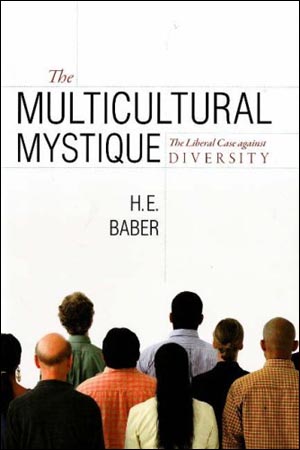 Onward to the good, however: this book gives us a working definition of each type of multiculturalism, albeit with hokey postmodern-style metaphors. The kind the author rails against is “salad bowl” multiculturalism, where members of different ethnic groups move to a new land and then stay segregated by ethnicity. The kind the author endorses is assimilation, or everyone giving up on their source culture and joining the new culture. Difficulty: the author admits that such a culture doesn’t exist, and just about goes far enough to admit that diversity kills it, but then launches on a praiseful tirade in favor of individualism and having no higher cultural goals.
Onward to the good, however: this book gives us a working definition of each type of multiculturalism, albeit with hokey postmodern-style metaphors. The kind the author rails against is “salad bowl” multiculturalism, where members of different ethnic groups move to a new land and then stay segregated by ethnicity. The kind the author endorses is assimilation, or everyone giving up on their source culture and joining the new culture. Difficulty: the author admits that such a culture doesn’t exist, and just about goes far enough to admit that diversity kills it, but then launches on a praiseful tirade in favor of individualism and having no higher cultural goals.




 del.icio.us
del.icio.us
 Digg
Digg Last February, by way of an introduction, I put up a
Last February, by way of an introduction, I put up a  Is het niet vreemd dat op de website van Amnesty International Vlaanderen
Is het niet vreemd dat op de website van Amnesty International Vlaanderen 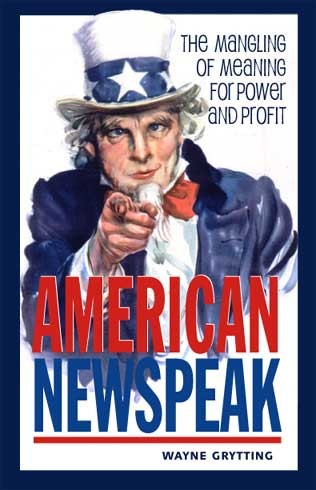 Cultuurrelativisme
Cultuurrelativisme Che
Che 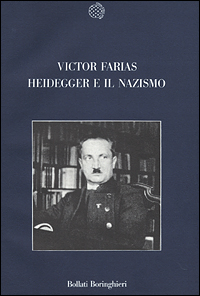

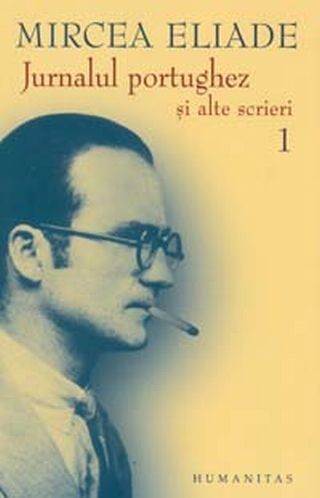 Die State University of New York Press hat die englische Übersetzung des „portugiesischen Tagebuchs“ (Jurnalul portughez) von Mircea Eliade – er war von 1941-45 rumänischer Botschafter in Lissabon – veröffentlicht:
Die State University of New York Press hat die englische Übersetzung des „portugiesischen Tagebuchs“ (Jurnalul portughez) von Mircea Eliade – er war von 1941-45 rumänischer Botschafter in Lissabon – veröffentlicht: Evola hat 1942 „Il filosofo mascherato“, die Besprechung eines Buches von Maxime Leroy über Descartes’ deviantes Rosenkreuzertum und seine Rolle im Rahmen der Gegeninitiation, in „La Vita Italiana“ veröffentlicht. (Deutsche Übersetzung: Der Philosoph mit der Maske, in: Kshatriya-Rundbrief, Nr. 7, 2000) Schmitts „Leviathan“ besprach Evola bereits 1938 in „La Vita Italiana“ (nachgedruckt in zwei weiteren wichtigen italienischen Zeitschriften). Evola kommt im übrigen in Eliades Tagebuch laut Index nicht vor.
Evola hat 1942 „Il filosofo mascherato“, die Besprechung eines Buches von Maxime Leroy über Descartes’ deviantes Rosenkreuzertum und seine Rolle im Rahmen der Gegeninitiation, in „La Vita Italiana“ veröffentlicht. (Deutsche Übersetzung: Der Philosoph mit der Maske, in: Kshatriya-Rundbrief, Nr. 7, 2000) Schmitts „Leviathan“ besprach Evola bereits 1938 in „La Vita Italiana“ (nachgedruckt in zwei weiteren wichtigen italienischen Zeitschriften). Evola kommt im übrigen in Eliades Tagebuch laut Index nicht vor. 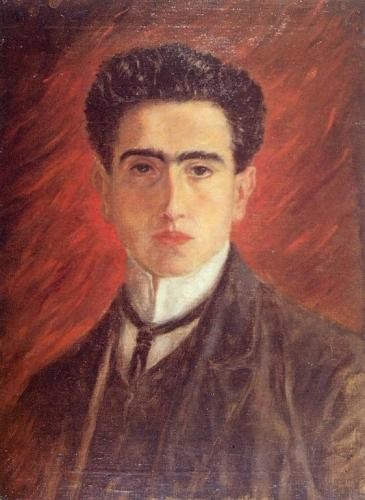
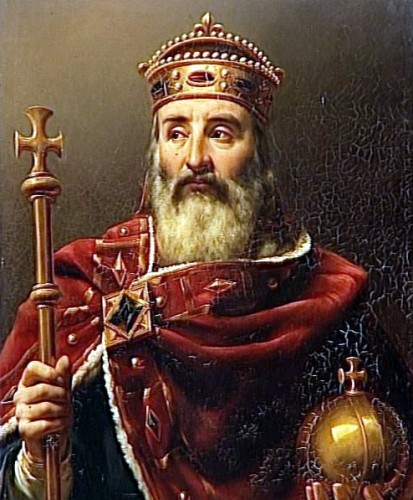


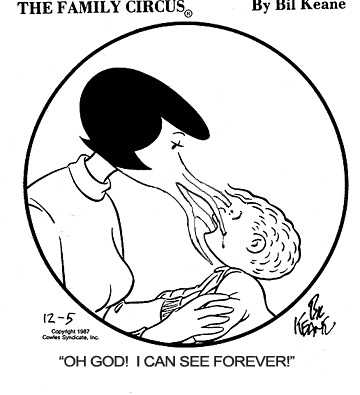
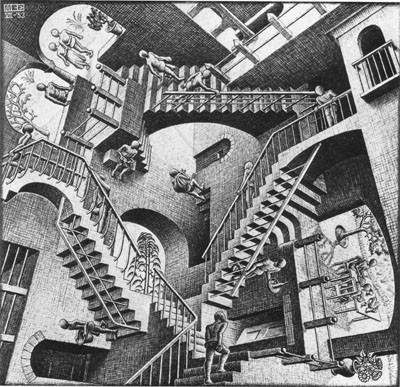
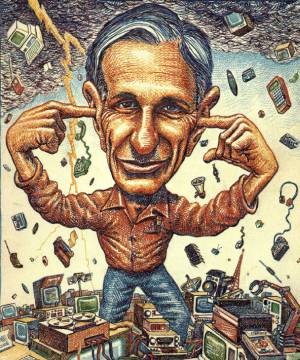 Né à Vienne en 1926, d’un père dalmate et d’une mère d’origine juive, et mort en toute discrétion en 2002 après avoir vécu entre les États-Unis, l’Allemagne et l’Amérique du sud; prêtre anticlérical, médiéviste joyeusement apatride, érudit étourdissant, sorte d’Épicure gyrovague, polyglotte, curieux, passionné, insaisissable, et touche-à-tout; critique radical, en pensée comme en acte, de la modernité industrielle, héritier de Bernard Charbonneau et de Jacques Ellul, inspirateur d’intellectuels comme Jean-Pierre Dupuy, Mike Singleton, Serge Latouche, Alain Caillé, André Gorz, Jean Robert ou encore des mouvements écologistes, décroissantistes et post-développementistes; hélas aussi figure de proue d’une certaine intelligentsia des années soixante qui ne feuilleta, en général, que Une Société sans école et ne retint de son travail que ce qui pouvait servir ses mauvaises humeurs adolescentes puis, plus tard, ses bonnes recettes libertariennes, Ivan Illich est sans conteste l’un des penseurs les plus originaux, les plus complets, les plus lucides ainsi que les plus mal lus du XXe siècle.
Né à Vienne en 1926, d’un père dalmate et d’une mère d’origine juive, et mort en toute discrétion en 2002 après avoir vécu entre les États-Unis, l’Allemagne et l’Amérique du sud; prêtre anticlérical, médiéviste joyeusement apatride, érudit étourdissant, sorte d’Épicure gyrovague, polyglotte, curieux, passionné, insaisissable, et touche-à-tout; critique radical, en pensée comme en acte, de la modernité industrielle, héritier de Bernard Charbonneau et de Jacques Ellul, inspirateur d’intellectuels comme Jean-Pierre Dupuy, Mike Singleton, Serge Latouche, Alain Caillé, André Gorz, Jean Robert ou encore des mouvements écologistes, décroissantistes et post-développementistes; hélas aussi figure de proue d’une certaine intelligentsia des années soixante qui ne feuilleta, en général, que Une Société sans école et ne retint de son travail que ce qui pouvait servir ses mauvaises humeurs adolescentes puis, plus tard, ses bonnes recettes libertariennes, Ivan Illich est sans conteste l’un des penseurs les plus originaux, les plus complets, les plus lucides ainsi que les plus mal lus du XXe siècle. 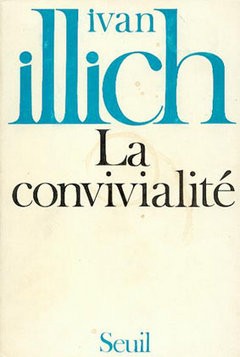 Dans le premier, Une société sans école, Illich montre que l’école, comme institution, et «l’éducation» professionnalisée, comme logique de sociabilisation, non seulement nuisent à l’apprentissage et à la curiosité intellectuelle, mais surtout ont pour fonction véritable d’inscrire dans l’imaginaire collectif des valeurs qui justifient et légitiment les stratifications sociales en même temps qu’elles les font. Il ne s’agit pas seulement, à l’instar du travail de gauche «classique» de Bourdieu et Passeron, de montrer que l’école reproduit les inégalités sociales, donc qu’elle met en porte-à-faux, stigmatise et exclut les classes sociales défavorisées dont elle est censée favoriser l’ascension sociale, mais de démontrer que l’idée même de cette possibilité ou de cette nécessité d’ascension sociale par la scolarité permet, crée ces inégalités en opérant comme un indicateur d’infériorité sociale. Par ailleurs, l’école et les organismes d’éducation professionnels agissent en se substituant à toute une série d’organes d’éducation propres à la société civile ou aux familles, délégitimant les apprentissages qu’ils procurent. Elle est donc un moyen de contrôle social et non pas de libération des déterminations sociales. Les normes de l’éducation et du savoir, la légitimité de ce que l’on sait faire et de ce que l’on comprend se mettent donc à dépendre d’un programme et d’un jugement mécanique qui forment aussi un écran entre l’individu et sa propre survie ou sa propre valeur. Ce programme est celui de l’axe production/consommation sur lequel se fonde la modernité industrielle. «L’école est un rite initiatique qui fait entrer le néophyte dans la course sacrée à la consommation, c’est aussi un rite propitiatoire où les prêtres de l’alma mater sont les médiateurs entre les fidèles et les divinités de la puissance et du privilège. C’est enfin un rituel d’expiation qui ordonne de sacrifier les laissés-pour-compte, de les marquer au fer, de faire d’eux les boucs émissaires du sous-développement» (1).
Dans le premier, Une société sans école, Illich montre que l’école, comme institution, et «l’éducation» professionnalisée, comme logique de sociabilisation, non seulement nuisent à l’apprentissage et à la curiosité intellectuelle, mais surtout ont pour fonction véritable d’inscrire dans l’imaginaire collectif des valeurs qui justifient et légitiment les stratifications sociales en même temps qu’elles les font. Il ne s’agit pas seulement, à l’instar du travail de gauche «classique» de Bourdieu et Passeron, de montrer que l’école reproduit les inégalités sociales, donc qu’elle met en porte-à-faux, stigmatise et exclut les classes sociales défavorisées dont elle est censée favoriser l’ascension sociale, mais de démontrer que l’idée même de cette possibilité ou de cette nécessité d’ascension sociale par la scolarité permet, crée ces inégalités en opérant comme un indicateur d’infériorité sociale. Par ailleurs, l’école et les organismes d’éducation professionnels agissent en se substituant à toute une série d’organes d’éducation propres à la société civile ou aux familles, délégitimant les apprentissages qu’ils procurent. Elle est donc un moyen de contrôle social et non pas de libération des déterminations sociales. Les normes de l’éducation et du savoir, la légitimité de ce que l’on sait faire et de ce que l’on comprend se mettent donc à dépendre d’un programme et d’un jugement mécanique qui forment aussi un écran entre l’individu et sa propre survie ou sa propre valeur. Ce programme est celui de l’axe production/consommation sur lequel se fonde la modernité industrielle. «L’école est un rite initiatique qui fait entrer le néophyte dans la course sacrée à la consommation, c’est aussi un rite propitiatoire où les prêtres de l’alma mater sont les médiateurs entre les fidèles et les divinités de la puissance et du privilège. C’est enfin un rituel d’expiation qui ordonne de sacrifier les laissés-pour-compte, de les marquer au fer, de faire d’eux les boucs émissaires du sous-développement» (1). 

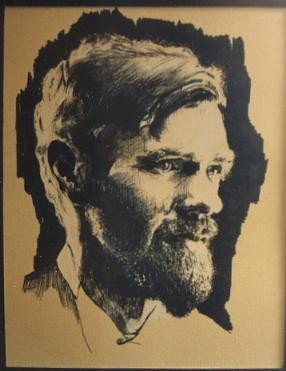 1. The Genealogy of Modernity
1. The Genealogy of Modernity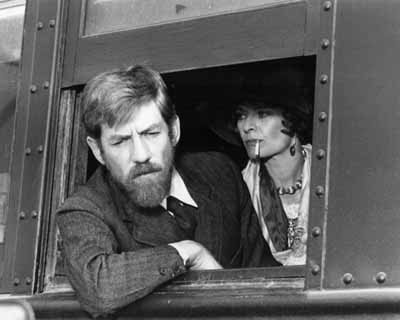 Lawrence encountered the effects of modernity—especially the Industrial Revolution—directly in his native Midlands. He saw how if affected people, generally for the worse. Again and again he sets his stories against the backdrop of the collieries. He saw the miners become increasingly dehumanized. Working in the earth, they become cut off from it and from themselves. They lived, but they did not flourish. Lawrence’s remarks about the Industrial Revolution, capitalism, and the condition of the miners put him quite close to the thought of Marx and other socialist writers. In fact, it would not be at all unreasonable to claim Lawrence as a kind of socialist. However, as we shall see, few socialists would wish to do so!
Lawrence encountered the effects of modernity—especially the Industrial Revolution—directly in his native Midlands. He saw how if affected people, generally for the worse. Again and again he sets his stories against the backdrop of the collieries. He saw the miners become increasingly dehumanized. Working in the earth, they become cut off from it and from themselves. They lived, but they did not flourish. Lawrence’s remarks about the Industrial Revolution, capitalism, and the condition of the miners put him quite close to the thought of Marx and other socialist writers. In fact, it would not be at all unreasonable to claim Lawrence as a kind of socialist. However, as we shall see, few socialists would wish to do so!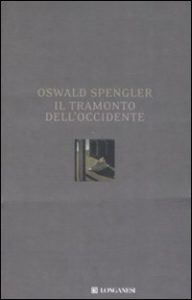
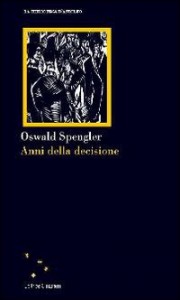

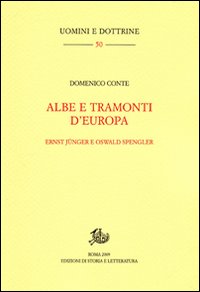
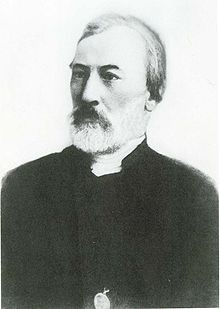 Infréquentable, à coup sur, Konstantin Leontiev l'est. Non qu'il le fut, de son vivant. Certainement pas. Sûrement même le fut-il moins, bien moins, que Dostoïevski ou Tolstoï aux yeux d'une grande partie de la bonne société de l'époque. Actuellement, par contre, il l'est évidemment, pour la très simple raison qu'il est mort, et pour la tout aussi simple raison qu'il n'a pas eu l'excellente idée de laisser à la postérité une œuvre immortelle selon les actuels canon de l'immortalité.
Infréquentable, à coup sur, Konstantin Leontiev l'est. Non qu'il le fut, de son vivant. Certainement pas. Sûrement même le fut-il moins, bien moins, que Dostoïevski ou Tolstoï aux yeux d'une grande partie de la bonne société de l'époque. Actuellement, par contre, il l'est évidemment, pour la très simple raison qu'il est mort, et pour la tout aussi simple raison qu'il n'a pas eu l'excellente idée de laisser à la postérité une œuvre immortelle selon les actuels canon de l'immortalité. 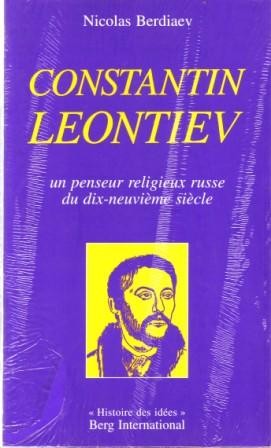 L'Européen moyen, idéal et outil de la destruction universelle ? Puisque, ne l'oublions pas, la littérature «vraie» doit être, nécessairement, engagée; c'est-à-dire, au-delà de critiques de pure forme, aller, toujours, dans le sens du courant. Or, nous y sommes d'ores et déjà en la belle et unie Europe, nous y sommes depuis un bon bout de temps dans ce moment historique, dans cet événement des événements qui va durer encore et encore, en plein dans cette heureuse période de l'unification, dans l'heureuse diversité des êtres équitablement soumis aux choses. Certes, avec des heurts et quelques accidents de parcours, mais bénins en somme, insignifiants même, au regard du grand espoir de «paix universelle» vers lequel tous, dans une belle unanimité, nous tendons. En tout cas nous y sommes bel et bien, oui en Europe ! Alors, quel besoin aurions-nous de nous auto-flageller en lisant ce «grand-russien» décédé, dépassé, déclassé ?
L'Européen moyen, idéal et outil de la destruction universelle ? Puisque, ne l'oublions pas, la littérature «vraie» doit être, nécessairement, engagée; c'est-à-dire, au-delà de critiques de pure forme, aller, toujours, dans le sens du courant. Or, nous y sommes d'ores et déjà en la belle et unie Europe, nous y sommes depuis un bon bout de temps dans ce moment historique, dans cet événement des événements qui va durer encore et encore, en plein dans cette heureuse période de l'unification, dans l'heureuse diversité des êtres équitablement soumis aux choses. Certes, avec des heurts et quelques accidents de parcours, mais bénins en somme, insignifiants même, au regard du grand espoir de «paix universelle» vers lequel tous, dans une belle unanimité, nous tendons. En tout cas nous y sommes bel et bien, oui en Europe ! Alors, quel besoin aurions-nous de nous auto-flageller en lisant ce «grand-russien» décédé, dépassé, déclassé ?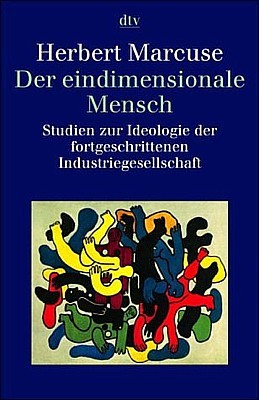 Malgré l’instrumentalisation des corpus doctrinaux de l’Ecole de Francfort et malgré les désastres que cette instrumentalisation a provoqué en Europe, les idées diffusées par l’Ecole de Francfort véhiculent des thèmes intéressants qui, eux, n’ont pas été inclus dans la vulgate, seule responsable des dégâts sociaux et anthropologiques que nous déplorons depuis quelques décennies en Europe. Quand un Herbert Marcuse (1898-1979) nous parle de l’homme unidimensionnel, pour déplorer sa banalisation dans les sociétés industrielles modernes, il ne fait qu’énoncer un état de choses déjà déploré par Nietzsche. L’homme unidimensionnel de Marcuse partage bien des traits en commun avec le « dernier homme » de Nietzsche. Dans « Eros et la civilisation », Marcuse évoque le refoulement du désir dans les sociétés modernes, exactement comme le déploraient certains mouvements de jeunesse alternatifs allemands entre 1896 et 1933 ; cette option philosophique de vouloir libérer les instincts refoulés, en imitant les groupes marginaux ou exclus des sociétés même au détriment des majorités politiques et parlementaires, a eu, avec l’appui de tout un attirail d’interprétations freudiennes, un impact important sur la révolte étudiante des années 67-68 en Allemagne, en France et ailleurs en Europe. Marcuse condamnera toutefois l’usage de la violence et se fera apostropher comme « mou » par certains échaudés, dénommés « Krawallos ». Entre la théorie écrite et la pratique mise en œuvre par les services à partir des années 60 du 20ème siècle, il y a une nette différence. Mais c’est la vulgate, la version instrumentalisée, sloganisée à l’usage des Krawallos, qui a triomphé au détriment de la théorie proprement dite : c’est au départ d’une hyper-simplification du contenu d’ « Eros et la civilisation » que l’on a fabriqué la société festiviste actuelle, une société festiviste incapable de forger un Etat digne de ce nom ou de générer un vivre-ensemble harmonieux et créatif. Tout comme dans le « Meilleur des mondes » d’Aldous Huxley, on vend des drogues et l’on favorise la promiscuité sexuelle pour endormir les volontés.
Malgré l’instrumentalisation des corpus doctrinaux de l’Ecole de Francfort et malgré les désastres que cette instrumentalisation a provoqué en Europe, les idées diffusées par l’Ecole de Francfort véhiculent des thèmes intéressants qui, eux, n’ont pas été inclus dans la vulgate, seule responsable des dégâts sociaux et anthropologiques que nous déplorons depuis quelques décennies en Europe. Quand un Herbert Marcuse (1898-1979) nous parle de l’homme unidimensionnel, pour déplorer sa banalisation dans les sociétés industrielles modernes, il ne fait qu’énoncer un état de choses déjà déploré par Nietzsche. L’homme unidimensionnel de Marcuse partage bien des traits en commun avec le « dernier homme » de Nietzsche. Dans « Eros et la civilisation », Marcuse évoque le refoulement du désir dans les sociétés modernes, exactement comme le déploraient certains mouvements de jeunesse alternatifs allemands entre 1896 et 1933 ; cette option philosophique de vouloir libérer les instincts refoulés, en imitant les groupes marginaux ou exclus des sociétés même au détriment des majorités politiques et parlementaires, a eu, avec l’appui de tout un attirail d’interprétations freudiennes, un impact important sur la révolte étudiante des années 67-68 en Allemagne, en France et ailleurs en Europe. Marcuse condamnera toutefois l’usage de la violence et se fera apostropher comme « mou » par certains échaudés, dénommés « Krawallos ». Entre la théorie écrite et la pratique mise en œuvre par les services à partir des années 60 du 20ème siècle, il y a une nette différence. Mais c’est la vulgate, la version instrumentalisée, sloganisée à l’usage des Krawallos, qui a triomphé au détriment de la théorie proprement dite : c’est au départ d’une hyper-simplification du contenu d’ « Eros et la civilisation » que l’on a fabriqué la société festiviste actuelle, une société festiviste incapable de forger un Etat digne de ce nom ou de générer un vivre-ensemble harmonieux et créatif. Tout comme dans le « Meilleur des mondes » d’Aldous Huxley, on vend des drogues et l’on favorise la promiscuité sexuelle pour endormir les volontés. 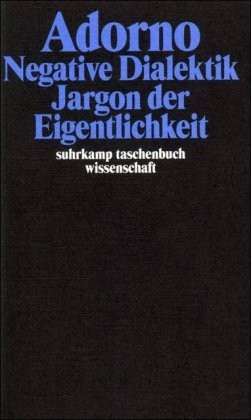 Outre Marcuse, idole des festivistes de mai 68, l’Ecole de Francfort a surtout aligné, en Allemagne, deux figures notoires, Theodor W. Adorno (1903-1969) et Max Horkheimer (1895-1973). Ces deux philosophes ont été les principaux représentants de la philosophie allemande dans les années 50. Adorno a déployé une critique de l’autoritarisme qui, selon lui, aurait toujours structuré la pensée allemande et, partant, européenne et américaine, faisant courir le risque de voir émerger de nouveaux fascismes à intervalles réguliers dans l’histoire. Il va vouloir déconstruire cet autoritarisme pour enrayer à l’avance toute émergence de nouveaux fascismes. Pour y procéder, il élaborera un système de mesure, consigné dans son célèbre ouvrage, La personnalité autoritaire. On y apprend même comment mesurer sur « l’échelle F » le degré de « fascisme » que peut receler la personnalité d’un individu. Le livre contient aussi un classement des citoyens en « Vorurteilsvollen » et « Vorurteilsfreien », soit ceux qui sont « pleins de préjugés » et ceux « qui sont libres de tous préjugés ». Ceux qui sont pleins de préjugés comptent aussi les « rebelles » et les « psychopathes », les « fous » et les « manipulateurs » dans leurs rangs. Ceux qui sont libres de tout préjugé comptent tout de même des « rigides », des protestataires, des impulsifs et des « easy goings » (« ungezwungene Vorurteilsfreie ») dans leurs rangs, qui sont posés comme sympathiques, comme mobilisables dans un projet « anti-autoritaire » mais dont l’efficacité n’est pas parfaite. Le summum de la qualité citoyenne ne se trouve que chez une minorité
Outre Marcuse, idole des festivistes de mai 68, l’Ecole de Francfort a surtout aligné, en Allemagne, deux figures notoires, Theodor W. Adorno (1903-1969) et Max Horkheimer (1895-1973). Ces deux philosophes ont été les principaux représentants de la philosophie allemande dans les années 50. Adorno a déployé une critique de l’autoritarisme qui, selon lui, aurait toujours structuré la pensée allemande et, partant, européenne et américaine, faisant courir le risque de voir émerger de nouveaux fascismes à intervalles réguliers dans l’histoire. Il va vouloir déconstruire cet autoritarisme pour enrayer à l’avance toute émergence de nouveaux fascismes. Pour y procéder, il élaborera un système de mesure, consigné dans son célèbre ouvrage, La personnalité autoritaire. On y apprend même comment mesurer sur « l’échelle F » le degré de « fascisme » que peut receler la personnalité d’un individu. Le livre contient aussi un classement des citoyens en « Vorurteilsvollen » et « Vorurteilsfreien », soit ceux qui sont « pleins de préjugés » et ceux « qui sont libres de tous préjugés ». Ceux qui sont pleins de préjugés comptent aussi les « rebelles » et les « psychopathes », les « fous » et les « manipulateurs » dans leurs rangs. Ceux qui sont libres de tout préjugé comptent tout de même des « rigides », des protestataires, des impulsifs et des « easy goings » (« ungezwungene Vorurteilsfreie ») dans leurs rangs, qui sont posés comme sympathiques, comme mobilisables dans un projet « anti-autoritaire » mais dont l’efficacité n’est pas parfaite. Le summum de la qualité citoyenne ne se trouve que chez une minorité Outre la composition de cet instrument de contrôle que fut le livre d’Adorno intitulé La personnalité autoritaire (Studien zum autoritären Charakter), les deux philosophes de l’Ecole de Francfort, installés dans l’Allemagne d’après-guerre, en rédigent le principal manifeste philosophique, Die Dialektik der Aufklärung (= « La dialectique des Lumières »), où ils affirment s’inscrire dans la tradition des Lumières, née au 18ème siècle, tout en critiquant certains avatars ultérieurs de cette démarche philosophique. Pour Horkheimer et Adorno, la science et la technologie, qui ont pris leur élan à l’époque des Lumières et dans les premiers balbutiements de la révolution industrielle avec l’appui des Encyclopédistes autour de d’Alembert et Diderot, ont pris au fil du temps un statut marqué d’ambigüité. La technologie et la science ont débouché sur la technocratie, affirment Horkheimer et Adorno dans leur manifeste, et, dans ce processus involutif, la raison des Lumières, d’idéelle est devenue « instrumentale », avec le risque d’être instrumentalisée par des forces politiques ne partageant pas l’idéal philosophique des Lumières (sous-entendu : les diverses formes de fascisme ou les néoconservatismes technocratiques d’après 1945). Le programme promu par La personnalité autoritaire peut être interprété, sans sollicitation outrancière, comme un instrument purement technocratique destiné à formater les masses dans un sens précis, contraire à leurs dispositions naturelles et ontologiques ou contraire aux legs d’une histoire nationale particulière. Alors qu’ils inventent un instrument de nature nettement technocratique, Adorno et Horkheimer critiquent la technocratie occidentale sur des bases sociologiques que nous pouvons pleinement accepter : en effet, les deux philosophes s’inscrivent dans un filon sociologique inauguré, non pas par Marx et ses premiers fidèles, mais par Georg Simmel et Max Weber. Ce dernier voulait lancer, par ses travaux et ceux de ses étudiants, « une science du réel, nous permettant de comprendre dans sa spécificité même la réalité en laquelle nos vies sont plongées ». Pour Simmel et Weber, le développement des sciences et des technologies apporteront certainement une quantité de bienfaits aux sociétés humaines mais elles provoqueront simultanément une hypertrophie des appareils abstraits, ceux de la technocratie en marche, par exemple, ceux de l’administration qui multipliera les règles de coercition sociale dans tous les domaines, conduisant à l’émergence d’un gigantesque « talon d’acier » (iron heel) ou d’une cage d’acier, qui oblitèreront la créativité humaine.
Outre la composition de cet instrument de contrôle que fut le livre d’Adorno intitulé La personnalité autoritaire (Studien zum autoritären Charakter), les deux philosophes de l’Ecole de Francfort, installés dans l’Allemagne d’après-guerre, en rédigent le principal manifeste philosophique, Die Dialektik der Aufklärung (= « La dialectique des Lumières »), où ils affirment s’inscrire dans la tradition des Lumières, née au 18ème siècle, tout en critiquant certains avatars ultérieurs de cette démarche philosophique. Pour Horkheimer et Adorno, la science et la technologie, qui ont pris leur élan à l’époque des Lumières et dans les premiers balbutiements de la révolution industrielle avec l’appui des Encyclopédistes autour de d’Alembert et Diderot, ont pris au fil du temps un statut marqué d’ambigüité. La technologie et la science ont débouché sur la technocratie, affirment Horkheimer et Adorno dans leur manifeste, et, dans ce processus involutif, la raison des Lumières, d’idéelle est devenue « instrumentale », avec le risque d’être instrumentalisée par des forces politiques ne partageant pas l’idéal philosophique des Lumières (sous-entendu : les diverses formes de fascisme ou les néoconservatismes technocratiques d’après 1945). Le programme promu par La personnalité autoritaire peut être interprété, sans sollicitation outrancière, comme un instrument purement technocratique destiné à formater les masses dans un sens précis, contraire à leurs dispositions naturelles et ontologiques ou contraire aux legs d’une histoire nationale particulière. Alors qu’ils inventent un instrument de nature nettement technocratique, Adorno et Horkheimer critiquent la technocratie occidentale sur des bases sociologiques que nous pouvons pleinement accepter : en effet, les deux philosophes s’inscrivent dans un filon sociologique inauguré, non pas par Marx et ses premiers fidèles, mais par Georg Simmel et Max Weber. Ce dernier voulait lancer, par ses travaux et ceux de ses étudiants, « une science du réel, nous permettant de comprendre dans sa spécificité même la réalité en laquelle nos vies sont plongées ». Pour Simmel et Weber, le développement des sciences et des technologies apporteront certainement une quantité de bienfaits aux sociétés humaines mais elles provoqueront simultanément une hypertrophie des appareils abstraits, ceux de la technocratie en marche, par exemple, ceux de l’administration qui multipliera les règles de coercition sociale dans tous les domaines, conduisant à l’émergence d’un gigantesque « talon d’acier » (iron heel) ou d’une cage d’acier, qui oblitèreront la créativité humaine.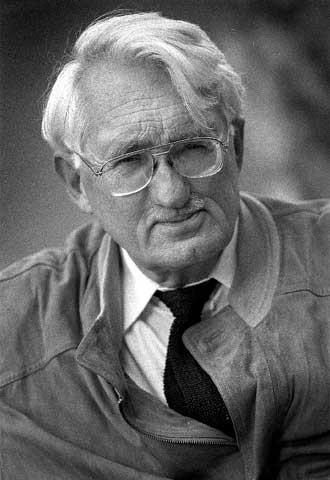 Habermas, ancien assistant d’Horkheimer puis son successeur à la tête de l’Institut de Francfort, devient, dès la fin des années 60, la figure de proue de la seconde génération de l’Ecole de Francfort. Son objectif ? Pour éviter la « cristallisation » des résidus de l’autoritarisme et des effets de l’application de la « raison instrumentale », une « cristallisation » qui aurait indubitablement ramené au pouvoir une nouvelle idéologie forte et autoritaire, Habermas s’ingéniera à théoriser une « praxis de la discussion permanente » (s’opposant en cela à Carl Schmitt qui, disciple de l’Espagnol Donoso Cortès, abominait la discussion et la « classe discutailleuse » au bénéfice des vrais décideurs, seuls aptes à maintenir le politique en place, les Etats et les empires en bon ordre de fonctionnement). La discussion et cette culture du débat permanent devaient justement empêcher les décisions trop tranchées amenant aux « cristallisations ». Les évolutions politiques devaient se dérouler lentement dans le temps, sans brusqueries ni hâtes même quand les décisions claires et nettes s’avéraient nécessaires, vu l’urgence, l’ Ernstfall. Cette posture habermasienne ne plaisait pas à tous les hommes de gauche, surtout aux communistes durs et purs, aux activistes directs : sa théorie a parfois été décrite comme l’incarnation du « défaitisme postfasciste », inaugurant, dans l’après-guerre, une « philosophie de la désorientation et des longs palabres ». Habermas est ainsi devenu le philosophe déréalisé le plus emblématique d’Europe. En 1990, il déplore la réunification allemande car celle-ci « met en danger la société multiculturelle et l’unité européenne qui étaient toutes deux depuis quelque temps déjà en voie de réalisation ». La seule alternative, pour Habermas, c’est de remplacer l’appartenance nationale des peuples par un « patriotisme constitutionnel », préférable, selon lui, « aux béquilles prépolitiques que sont la nationalité (charnelle) et l’idée de la communauté de destin » (Habermas s’attaque là aux deux conceptions que l’on trouve en Allemagne : l’idéal nationalitaire de romantique mémoire et l’idéal prussien a-national de participation à la vie et à la défense d’un type particulier d’Etat, à connotations spartiates). Le « patriotisme constitutionnel » est-il dès lors un antidote à la guerre, à ces guerres qu’ont déclenché les patriotismes appuyés sur les deux « béquilles » dénoncées par Habermas, soit l’idéal nationalitaire et l’idéal prussien ? En principe, oui ; en pratique, non, car en 1999 quand l’OTAN attaque la Serbie sous prétexte qu’elle oppresse la minorité albanaise du Kosovo, Habermas bénit l’opération en la qualifiant « de bond en avant sur la voie qui mène du droit des gens classique au droit cosmopolite d’une société mondiale de citoyens ». Et il ajoutait : « les voisins démocratiques (c’est-à-dire ceux qui avaient fait leur l’idée de « patriotisme constitutionnel ») ont le droit de passer à l’action pour apporter une aide de première nécessité, légitimée par le droit des gens ». Contradiction : le « constitutionalisme globaliste de l’OTAN » a sanctifié un réflexe identitaire ethno-national, celui des Albanais du Kosovo, contre le réflexe ethno-national des Serbes. L’OTAN, avec la bénédiction d’Habermas, a paradoxalement agi pour restaurer l’une des béquilles que ce dernier a toujours voulu éradiquer. Tout en pariant sur un élément musulman, étranger à l’Europe, importation turque dans les Balkans, au détriment de l’albanité catholique et orthodoxe, avant de l’être pour la « serbicité » slave et orthodoxe. Le tout pour permettre à l’US Army de se faire octroyer par le nouvel Etat kosovar la plus formidable base terrestre en Europe, Camp Bondsteele, destiné à remplacer les bases allemandes évacuées progressivement depuis la réunification. Camp Bondsteele sert à asseoir une présence militaire dans les Balkans, tremplin pour le contrôle de la Mer Noire, de la Méditerranée orientale et de l’Anatolie turque. Ces déclarations d’Habermas vieillissant ressemblent étrangement à l’agitation de ces chiens qui tentent de se manger la queue.
Habermas, ancien assistant d’Horkheimer puis son successeur à la tête de l’Institut de Francfort, devient, dès la fin des années 60, la figure de proue de la seconde génération de l’Ecole de Francfort. Son objectif ? Pour éviter la « cristallisation » des résidus de l’autoritarisme et des effets de l’application de la « raison instrumentale », une « cristallisation » qui aurait indubitablement ramené au pouvoir une nouvelle idéologie forte et autoritaire, Habermas s’ingéniera à théoriser une « praxis de la discussion permanente » (s’opposant en cela à Carl Schmitt qui, disciple de l’Espagnol Donoso Cortès, abominait la discussion et la « classe discutailleuse » au bénéfice des vrais décideurs, seuls aptes à maintenir le politique en place, les Etats et les empires en bon ordre de fonctionnement). La discussion et cette culture du débat permanent devaient justement empêcher les décisions trop tranchées amenant aux « cristallisations ». Les évolutions politiques devaient se dérouler lentement dans le temps, sans brusqueries ni hâtes même quand les décisions claires et nettes s’avéraient nécessaires, vu l’urgence, l’ Ernstfall. Cette posture habermasienne ne plaisait pas à tous les hommes de gauche, surtout aux communistes durs et purs, aux activistes directs : sa théorie a parfois été décrite comme l’incarnation du « défaitisme postfasciste », inaugurant, dans l’après-guerre, une « philosophie de la désorientation et des longs palabres ». Habermas est ainsi devenu le philosophe déréalisé le plus emblématique d’Europe. En 1990, il déplore la réunification allemande car celle-ci « met en danger la société multiculturelle et l’unité européenne qui étaient toutes deux depuis quelque temps déjà en voie de réalisation ». La seule alternative, pour Habermas, c’est de remplacer l’appartenance nationale des peuples par un « patriotisme constitutionnel », préférable, selon lui, « aux béquilles prépolitiques que sont la nationalité (charnelle) et l’idée de la communauté de destin » (Habermas s’attaque là aux deux conceptions que l’on trouve en Allemagne : l’idéal nationalitaire de romantique mémoire et l’idéal prussien a-national de participation à la vie et à la défense d’un type particulier d’Etat, à connotations spartiates). Le « patriotisme constitutionnel » est-il dès lors un antidote à la guerre, à ces guerres qu’ont déclenché les patriotismes appuyés sur les deux « béquilles » dénoncées par Habermas, soit l’idéal nationalitaire et l’idéal prussien ? En principe, oui ; en pratique, non, car en 1999 quand l’OTAN attaque la Serbie sous prétexte qu’elle oppresse la minorité albanaise du Kosovo, Habermas bénit l’opération en la qualifiant « de bond en avant sur la voie qui mène du droit des gens classique au droit cosmopolite d’une société mondiale de citoyens ». Et il ajoutait : « les voisins démocratiques (c’est-à-dire ceux qui avaient fait leur l’idée de « patriotisme constitutionnel ») ont le droit de passer à l’action pour apporter une aide de première nécessité, légitimée par le droit des gens ». Contradiction : le « constitutionalisme globaliste de l’OTAN » a sanctifié un réflexe identitaire ethno-national, celui des Albanais du Kosovo, contre le réflexe ethno-national des Serbes. L’OTAN, avec la bénédiction d’Habermas, a paradoxalement agi pour restaurer l’une des béquilles que ce dernier a toujours voulu éradiquer. Tout en pariant sur un élément musulman, étranger à l’Europe, importation turque dans les Balkans, au détriment de l’albanité catholique et orthodoxe, avant de l’être pour la « serbicité » slave et orthodoxe. Le tout pour permettre à l’US Army de se faire octroyer par le nouvel Etat kosovar la plus formidable base terrestre en Europe, Camp Bondsteele, destiné à remplacer les bases allemandes évacuées progressivement depuis la réunification. Camp Bondsteele sert à asseoir une présence militaire dans les Balkans, tremplin pour le contrôle de la Mer Noire, de la Méditerranée orientale et de l’Anatolie turque. Ces déclarations d’Habermas vieillissant ressemblent étrangement à l’agitation de ces chiens qui tentent de se manger la queue.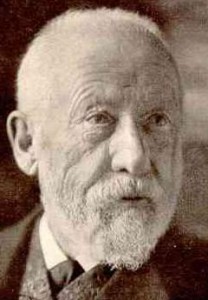 Sarebbe difficile sopravalutare l’importanza del padre dello storicismo, Wilhelm Dilthey, nel panorama della filosofia del Novecento. Il suo influsso, diretto o indiretto, si propaga in almeno quattro direzioni principali: quella dello storicismo tedesco, i cui massimi esponenti sono stati Ernst Troeltsch e Friedrich Meinecke; quella della sociologia, rappresentata da
Sarebbe difficile sopravalutare l’importanza del padre dello storicismo, Wilhelm Dilthey, nel panorama della filosofia del Novecento. Il suo influsso, diretto o indiretto, si propaga in almeno quattro direzioni principali: quella dello storicismo tedesco, i cui massimi esponenti sono stati Ernst Troeltsch e Friedrich Meinecke; quella della sociologia, rappresentata da 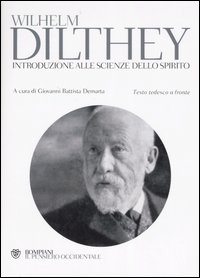
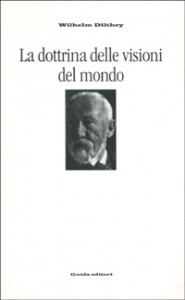
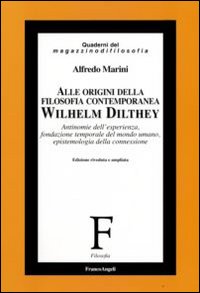
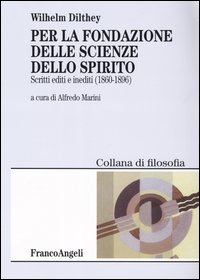

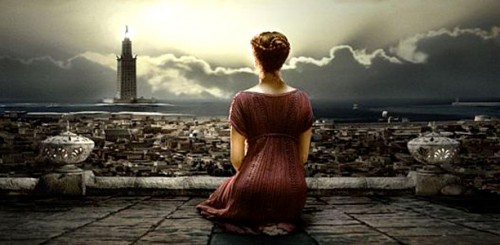
Robert STEUCKERS (1987):
Postmodern Challenges:
Between Faust & Narcissus, Part 1
In Oswald Spengler’s terms, our European culture is the product of a “pseudomorphosis,” i.e., of the grafting of an alien mentality upon our indigenous, original, and innate mentality. Spengler calls the innate mentality “the Faustian.”
The Confrontation of the Innate and the Acquired
The alien mentality is the theocentric, “magical” outlook born in the Near East. For the magical mind, the ego bows respectfully before the divine substance like a slave before his master. Within the framework of this religiosity, the individual lets himself be guided by the divine force that he absorbs through baptism or initiation.
There is nothing comparable for the old-European Faustian spirit, says Spengler. Homo europeanus, in spite of the magic/Christian varnish covering our thinking, has a voluntarist and anthropocentric religiosity. For us, the good is not to allow oneself to be guided passively by God, but rather to affirm and carry out our own will. “To be able to choose,” this is the ultimate basis of the indigenous European religiosity. In medieval Christianity, this voluntarist religiosity shows through, piercing the crust of the imported “magism” of the Middle East.
Around the year 1000, this dynamic voluntarism appears gradually in art and literary epics, coupled with a sense of infinite space within which the Faustian self would, and can, expand. Thus to the concept of a closed space, in which the self finds itself locked, is opposed the concept of an infinite space, into which an adventurous self sallies forth.
From the “Closed” World to the Infinite Universe
According to the American philosopher Benjamin Nelson,[1] the old Hellenic sense of physis (nature), with all the dynamism this implies, triumphed at the end of the 13th century, thanks to Averroism, which transmitted the empirical wisdom of the Greeks (and of Aristotle in particular) to the West. Gradually, Europe passed from the “closed world” to the infinite universe. Empiricism and nominalism supplanted a Scholasticism that had been entirely discursive, self-referential, and self-enclosed. The Renaissance, following Copernicus and Bruno (the tragic martyr of Campo dei Fiori), renounced geocentrism, making it safe to proclaim that the universe is infinite, an essentially Faustian intuition according to Spengler’s criteria.
In the second volume of his History of Western Thought, Jean-François Revel, who formerly officiated at Point and unfortunately illustrated the Americanocentric occidentalist ideology, writes quite pertinently: “It is easy to understand that the eternity and infinity of the universe announced by Bruno could have had, on the cultivated men of the time, the traumatizing effect of passing from life in the womb into the vast and cruel draft of an icy and unbounded vortex.”[2]
The “magic” fear, the anguish caused by the collapse of the comforting certitude of geocentrism, caused the cruel death of Bruno, that would become, all told, a terrifying apotheosis . . . Nothing could ever refute heliocentrism, or the theory of the infinitude of sidereal spaces. Pascal would say, in resignation, with the accent of regret: “The eternal silence of these infinite spaces frightens me.”
From Theocratic Logos to Fixed Reason
To replace magical thought’s “theocratic logos,” the growing and triumphant bourgeois thought would elaborate a thought centered on reason, an abstract reason before which it is necessary to bow, like the Near Easterner bows before his god. The “bourgeois” student of this “petty little reason,” virtuous and calculating, anxious to suppress the impulses of his soul or his spirit, thus finds a comfortable finitude, a closed off and secured space. The rationalism of this virtuous human type is not the adventurous, audacious, ascetic, and creative rationalism described by Max Weber[3] which educates the inner man precisely to face the infinitude affirmed by Giordano Bruno.[4]
From the end of the Renaissance, Two Modernities are Juxtaposed
The petty rationalism denounced by Sombart[5] dominates the cities by rigidifying political thought, by restricting constructive activist impulses. The genuinely Faustian and conquering rationalism described by Max Weber would propel European humanity outside its initial territorial limits, giving the main impulse to all sciences of the concrete.
From the end of the Renaissance, we thus discover, on the one hand, a rigid and moralistic modernity, without vitality, and, on the other hand, an adventurous, conquering, creative modernity, just as we are today on the threshold of a soft post-modernity or of a vibrant post-modernity, self-assured and potentially innovative. By recognizing the ambiguity of the terms “rationalism,” “rationality,” “modernity,” and “post-modernity,” we enter one level of the domain of political ideologies, even militant Weltanschauungen.
The rationalization glutted with moral arrogance described by Sombart in his famous portrait of the “bourgeois” generates the soft and sentimental messianisms, the great tranquillizing narratives of contemporary ideologies. The conquering rationalization described by Max Weber causes the great scientific discoveries and the methodical spirit, the ingenious refinement of the conduct of life and increasing mastery of the external world.
This conquering rationalization also has its dark side: It disenchants the world, drains it, excessively schematizes it. While specializing in one or another domain of technology, science, or the spirit, while being totally invested there, the “Faustians” of Europe and North America often lead to a leveling of values, a relativism that tends to mediocrity because it makes us lose the feeling of the sublime, of the telluric mystique, and increasingly isolates individuals. In our century, the rationality lauded by Weber, if positive at the beginning, collapsed into quantitativist and mechanized Americanism that instinctively led by way of compensation, to the spiritual supplement of religious charlatanism combining the most delirious proselytism and sniveling religiosity.
Such is the fate of “Faustianism” when severed from its mythic foundations, of its memory of the most ancient, of its deepest and most fertile soil. This caesura is unquestionably the result of pseudomorphosis, the “magian” graft on the Faustian/European trunk, a graft that failed. “Magianism” could not immobilize the perpetual Faustian drive; it has—and this is more dangerous—cut it off from its myths and memory, condemned it to sterility and dessication, as noted by Valéry, Rilke, Duhamel, Céline, Drieu, Morand, Maurois, Heidegger, or Abellio.
Conquering Rationality, Moralizing Rationality, the Dialectic of Enlightenment, the “Grand Narratives” of Lyotard
Conquering rationality, if it is torn away from its founding myths, from its ethno-identitarian ground, its Indo-European matrix, falls—even after assaults that are impetuous, inert, emptied of substance—into the snares of calculating petty rationalism and into the callow ideology of the “Grand Narratives” of rationalism and the end of ideology. For Jean-François Lyotard, “modernity” in Europe is essentially the “Grand Narrative” of the Enlightenment, in which the heroes of knowledge work peacefully and morally toward an ethico-political happy ending: universal peace, where no antagonism will remain.[6] The “modernity” of Lyotard corresponds to the famous “Dialectic of the Enlightenment” of Horkheimer and Adorno, leaders of famous “Frankfurt School.”[7] In their optic, the work of the man of science or the action of the politician, must be submitted to a rational reason, an ethical corpus, a fixed and immutable moral authority, to a catechism that slows down their drive, that limits their Faustian ardor. For Lyotard, the end of modernity, thus the advent of “post-modernity,” is incredulity—progressive, cunning, fatalistic, ironic, mocking—with regard to this metanarrative.
Incredulity also means a possible return of the Dionysian, the irrational, the carnal, the turbid, and disconcerting areas of the human soul revealed by Bataille or Caillois, as envisaged and hoped by professor Maffesoli,[8] of the University of Strasbourg, and the German Bergfleth,[9] a young nonconformist philosopher; that is to say, it is equally possible that we will see a return of the Faustian spirit, a spirit comparable with that which bequeathed us the blazing Gothic, of a conquering rationality which has reconnected with its old European dynamic mythology, as Guillaume Faye explains in Europe and Modernity.[10]
Notes
1. Benjamin Nelson, Der Ursprung der Moderne, Vergleichende Studien zum Zivilisationsprozess [The Origin of Modernity: Comparative Studies of the Civilization Process] (Frankfurt am Main: Suhrkamp, 1986).
2. Jean-François Revel, Histoire de la pensée occidentale [History of Western Thought], vol. 2, La philosophie pendant la science (XVe, XVIe et XVIIe siècles) [Philosophy and Science (Fifteenth-, Sixteenth-, and Seventeenth-Centuries)] (Paris: Stock, 1970). Cf. also the masterwork of Alexandre Koyré, From the Closed World to the Infinite Universe (Baltimore: Johns Hopkins University Press, 1957).
3. Cf. Julien Freund, Max Weber (Paris: P.U.F., 1969).
4. Paul-Henri Michel, La cosmologie de Giordano Bruno [The Cosmology of Giordano Bruno] (Paris: Hermann, 1962).
5. Cf. essentially: Werner Sombart, Le Bourgeois. Contribution à l’histoire morale et intellectuelle de l’homme économique moderne [The Bourgeois: Contribution to the Moral and Intellectual History of Modern Economic Man] (Paris: Payot, 1966).
6. Jean-François Lyotard, The Postmodern Condition: A Report on Knowledge, trans. Geoff Bennington and Brian Massumi. (Minneapolis: University of Minnesota Press, 1984).
7. Max Horkheimer and Theodor Adomo, The Dialectic of Enlightenment, trans. Edmund Jephcott (Stanford: Stanford University Press, 2002). Cf. also Pierre Zima, L’École de Francfort. Dialectique de la particularité [The Frankfurt School: Dialectic of Particularity] (Paris: Éditions Universitaires, 1974). Michel Crozon, “Interroger Horkheimer” [“Interrogating Horkheimer”] and Arno Victor Nielsen, “Adorno, le travail artistique de la raison” [“Adorno: The Artistic Work of Reason”], Esprit, May 1978.
8. Cf. chiefly Michel Maffesoli, L’ombre de Dionysos: Contribution à une sociologie de l’orgie [The Shadow of Dionysus: Contribution to a Sociology of the Orgy] (Méridiens, 1982). Pierre Brader, “Michel Maffesoli: saluons le grand retour de Dionysos” [Michel Maffesoli: Let us Greet the Great return of Dionysos], Magazine-Hebdo no. 54 (September 21, 1984).
9. Cf. Gerd Bergfleth et al., Zur Kritik der Palavernden Aufklärung [Toward a Critique of Palavering Reason] (Munich: Matthes & Seitz, 1984). In this remarkable little anthology, Bergfleth published four texts deadly to the “moderno-Frankfurtist” routine: (1) “Zehn Thesen zur Vernunftkritik” [“Ten Theses on the Critique of Reason”]; (2) “Der geschundene Marsyas” [“The Abuse of Marsyas”]; (3) “Über linke Ironie” [“On Leftist Irony”]; (4) “Die zynische Aufklärung” [“The Cynical Enlightnement”]. Cf. also R. Steuckers, “G. Bergfleth: enfant terrible de la scène philosophique allemande” [“G. Bergfleth: enfant terrible of the German philosophical scene”], Vouloir no. 27 (March 1986). In the same issue, see also M. Kamp, “Bergfleth: critique de la raison palabrante” [“Bergfleth: Critique of Palavering Reason”] and “Une apologie de la révolte contre les programmes insipides de la révolution conformiste” [“An Apology for the Revolt against the Insipid Programs of the Conformist Revolution”]. See also M. Froissard, “Révolte, irrationnel, cosmicité et . . . pseudo-antisémitisme,” [“Revolt, irrationality, cosmicity and . . . pseudo-anti-semitism”], Vouloir nos. 40–42 (July–August 1987).
10. Guillaume Faye, Europe et Modernité [Europe and Modernity] (Méry/Liège: Eurograf, 1985).
Postmodern Challenges:
Between Faust & Narcissus, Part 2
Once the Enlightenment metanarrative was established—“encysted”—in the Western mind, the great secular ideologies progressively appeared: liberalism, with its idolatry of the “invisible hand,”[1] and Marxism, with its strong determinism and metaphysics of history, contested at the dawn of the 20th century by Georges Sorel, the most sublime figure of European militant socialism.[2] Following Giorgio Locchi[3]—who occasionally calls the metanarrative “ideology” or “science”—we think that this complex “metanarrative/ideology/science” no longer rules by consensus but by constraint, inasmuch as there is muted resistance (especially in art and music[4]) or a general disuse of the metanarrative as one of the tools of legitimation.
The liberal-Enlightenment metanarrative persists by dint of force and propaganda. But in the sphere of thought, poetry, music, art, or letters, this metanarrative says and inspires nothing. It has not moved a great mind for 100 or 150 years. Already at the end of the 19th century, literary modernism expressed a diversity of languages, a heterogeneity of elements, a kind of disordered chaos that the “physiologist” Nietzsche analyzed[5] and that Hugo von Hoffmannstahl called die Welt der Bezuge (the world of relations).
These omnipresent interrelations and overdeterminations show us that the world is not explained by a simple, neat and tidy story, nor does it submit itself to the rule of a disincarnated moral authority. Better: they show us that our cities, our people, cannot express all their vital potentialities within the framework of an ideology given and instituted once and for all for everyone, nor can we indefinitely preserve the resulting institutions (the doctrinal body derived from the “metanarrative of the Enlightenment”).
The anachronistic presence of the metanarrative constitutes a brake on the development of our continent in all fields: science (data-processing and biotechnology[6]), economics (the support of liberal dogmas within the EEC), military (the fetishism of a bipolar world and servility toward the United States, paradoxically an economic enemy), cultural (media bludgeoning in favor of a cosmopolitanism that eliminates Faustian specificity and aims at the advent of a large convivial global village, run on the principles of the “cold society” in the manner of the Bororos dear to Lévi-Strauss[7]).
The Rejection of Neo-Ruralism, Neo-Pastoralism . . .
The confused disorder of literary modernism at the end of the 19th century had a positive aspect: its role was to be the magma that, gradually, becomes the creator of a new Faustian assault.[8] It is Weimar—specifically, the Weimar-arena of the creative and fertile confrontation of expressionism,[9] neo-Marxism, and the “conservative revolution”[10]—that bequeathed us, with Ernst Jünger, an idea of “post-metanarrative” modernity (or post-modernity, if one calls “modernity” the Dialectic of the Enlightenment, subsequently theorized by the Frankfurt School). Modernism, with the confusion it inaugurates, due to the progressive abandonment the pseudo-science of the Enlightenment, corresponds somewhat to the nihilism observed by Nietzsche. Nihilism must be surmounted, exceeded, but not by a sentimental return, however denied, to a completed past. Nihilism is not surpassed by theatrical Wagnerism, Nietzsche fulminated, just as today the foundering of the Marxist “Grand Narrative” is not surpassed by a pseudo-rustic neoprimitivism.[11]
In Jünger—the Jünger of In Storms of Steel, The Worker, and Eumeswil—one finds no reference to the mysticism of the soil: only a sober admiration for the perennialness of the peasant, indifferent to historical upheavals. Jünger tells us of the need for balance: if there is a total refusal of the rural, of the soil, of the stabilizing dimension of Heimat, constructivist Faustian futurism will no longer have a base, a point of departure, a fallback option. On the other hand, if the accent is placed too much on the initial base, the launching point, on the ecological niche that gives rise to the Faustian people, then they are wrapped in a cocoon and deprived of universal influence, rendered blind to the call of the world, prevented from springing towards reality in all its plenitude, the “exotic” included. The timid return to the homeland robs Faustianism of its force of diffusion and relegates its “human vessels” to the level of the “eternal ahistoric peasants” described by Spengler and Eliade.[12] Balance consists in drawing in (from the depths of the original soil) and diffusing out (towards the outside world).
In spite of all nostalgia for the “organic,” rural, or pastoral—in spite of the serene, idyllic, aesthetic beauty that recommend Horace or Virgil—Technology and Work are from now on the essences of our post-nihilist world. Nothing escapes any longer from technology, technicality, mechanics, or the machine: neither the peasant who plows with his tractor nor the priest who plugs in a microphone to give more impact to his homily.
The era of “Technology”
Technology mobilizes totally (Total Mobilmachung) and thrusts the individual into an unsettling infinitude where we are nothing more than interchangeable cogs. The machine gun, notes the warrior Jünger, mows down the brave and the cowardly with perfect equality, as in the total material war inaugurated in 1917 in the tank battles of the French front. The Faustian “Ego” loses its intraversion and drowns in a ceaseless vortex of activity. This Ego, having fashioned the stone lacework and spires of the flamboyant Gothic, has fallen into American quantitativism or, confused and hesitant, has embraced the 20th century’s flood of information, its avalanche of concrete facts. It was our nihilism, our frozen indecision due to an exacerbated subjectivism, that mired us in the messy mud of facts.
By crossing the “line,” as Heidegger and Jünger say,[13] the Faustian monad (about which Leibniz[14] spoke) cancels its subjectivism and finds pure power, pure dynamism, in the universe of Technology. With the Jüngerian approach, the circle is closed again: as the closed universe of “magism” was replaced by the inauthentic little world of the bourgeois—sedentary, timid, embalmed in his utilitarian sphere—so the dynamic “Faustian” universe is replaced with a Technological arena, stripped this time of all subjectivism.
Jüngerian Technology sweeps away the false modernity of the Enlightenment metanarrative, the hesitation of late 19th century literary modernism, and the trompe-l’oeil of Wagnerism and neo-pastoralism. But this Jüngerian modernity, perpetually misunderstood since the publication of Der Arbeiter [The Worker] in 1932, remains a dead letter.
Notes
1. On the theological foundation of the doctrine of the “invisible hand” see Hans Albert, “Modell-Platonismus. Der neoklassische Stil des ökonomischen Denkens in kritischer Beleuchtung” [“Model Platonism: The Neoclassical Style of Economic Thought in Critical Elucidation”], in Ernst Topitsch, ed., Logik der Sozialwissenschaften [Logic of Social Science] (Köln/Berlin: Kiepenheuer & Witsch, 1971).
2. There is abundant French literature on Georges Sorel. Nevertheless, it is deplorable that a biography and analysis as valuable as Michael Freund’s has not been translated: Michael Freund, Georges Sorel, Der revolutionäre Konservatismus [Georges Sorel: Revolutionary Conservatism] (Frankfurt a.M.: Vittorio Klostermann, 1972).
3. Cf. G. Locchi, “Histoire et société: critique de Lévi-Strauss” [“History and Society: Critique of Lévi-Strauss”], Nouvelle Ecole, no. 17 (March 1972) and “L’histoire” [“History”], Nouvelle Ecole, nos. 27–28 (January 1976).
4. Cf. G. Locchi, “L’idée de la musique’ et le temps de l’histoire” [“The ‘Idea of Music’ and the Times of History”], Nouvelle Ecole, no. 30 (November 1978) and Vincent Samson, “Musique, métaphysique et destin” [“Music, Metaphysics, and Destiny”], Orientations, no. 9 (September 1987).
5. Cf. Helmut Pfotenhauer, Die Kunst als Physiologie: Nietzsches äesthetische Theorie und literarische Produktion [Art as Physiology: Nietzsche’s Aesthetic Theory and Literary Production] (Stuttgart: J. B. Metzler, 1985). Cf. on Pfotenhauer’s book: Robert Steuckers, “Regards nouveaux sur Nietzsche” [“New Views of Nietzsche”], Orientations, no. 9.
6. Biotechnology and the most recent biocybernetic innovations, when applied to the operation of human society, fundamentally call into question the mechanistic theoretical foundations of the “Grand Narrative” of the Enlightenment. Less rigid, more flexible laws, because adapted to the deep drives of human psychology and physiology, would restore a dynamism to our societies and put them in tune with technological innovations. The Grand Narrative—which is always around, in spite of its anachronism—blocks the evolution of our societies; Habermas’ thought, which categorically refuses to fall in step with the epistemological discoveries of Konrad Lorenz, for example, illustrates perfectly the genuinely reactionary rigidity of the neo-Enlightenment in its Frankfurtist and current neo-liberal derivations. To understand the shift that is taking place regardless of the liberal-Frankfurtist reaction, see the work of the German bio-cybernetician Frederic Vester: (1) Unsere Welt—ein vernetztes System, dtv, no. l0,118, 2nd ed. (München, 1983) and (2) Neuland des Denkens. Vom technokratischen zum kybernetischen Zeitalter (Stuttgart: DVA, 1980). The restoration of holist (ganzheitlich) social thought by modern biology is discussed, most notably, in Gilbert Probst, Selbst-Organisation, Ordnungsprozesse in sozialen Systemen aus ganzheitlicher Sicht (Berlin: Paul Parey, 1987).
7. G. Locchi, “L’idée de la musique’ et le temps de l’histoire.”
8. To tackle the question of the literary modernism in the 19th century, see: M. Bradbury, J. McFarlane, eds., Modernism 1890–1930 (Harmondsworth: Penguin, 1976).
9. Cf. Paul Raabe, ed., Expressionismus. Der Kampf um eine literarische Bewegung (Zürich: Arche, 1987)—A useful anthology of the principal expressionist manifestos.
10. Armin Mohler, La Révolution Conservatrice en Allemagne, 1918–1932 (Puiseaux: Pardès, 1993). See mainly text A3 entitled “Leitbilder” (“Guiding Ideas”).
11. Cf. Gérard Raulet, “Mantism and the Post-Modern Conditions” and Claude Karnoouh, “The Lost Paradise of Regionalism: The Crisis of Post-Modernity in France,” Telos, no. 67 (March 1986).
12. Cf. Oswald Spengler, The Decline of the West, 2 vols., trans. Charles Francis Atkinson (New York: Knopf, 1926) for the definition of the “ahistorical peasant” see vol. 2. Cf. Mircea Eliade, The Sacred and the Profane: The Nature of Religion, trans. Willard R. Trask (San Diego: Harcourt, 1959). For the place of this vision of the “peasant” in the contemporary controversy regarding neo-paganism, see: Richard Faber, “Einleitung: ‘Pagan’ und Neo-Paganismus. Versuch einer Begriffsklärung,” in Richard Faber and Renate Schlesier, Die Restauration der Götter: Antike Religion und Neo-Paganismus [The Restoration of the Gods: Ancient Religion and Neo-Paganism] (Würzburg: Königshausen & Neumann, 1986), 10–25. This text was reviewed in French by Robert Steuckers, “Le paganisme vu de Berlin” [“Paganism as Seen in Berlin”], Vouloir no. 28–29, April 1986, pp. 5–7.
13. On the question of the “line” in Jünger and Heidegger, cf. W. Kaempfer, Ernst Jünger, Sammlung Metzler, Band 20l (Stuttgart, Metzler, 1981), pp. 119–29. Cf also J. Evola, “Devant le ‘mur du temps’” [“Before the ‘Wall of Time’”] in Explorations: Hommes et problems [Explorations: Men and Problems], trans. Philippe Baillet (Puiseaux: Pardès, 1989), pp. 183–94. Let us take this opportunity to recall that, contrary to the generally accepted idea, Heidegger does not reject technology in a reactionary manner, nor does he regard it as dangerous in itself. The danger is due to the failure to think of the mystery of its essence, preventing man from returning to a more originary unconcealment and from hearing the call of a more primordial truth. If the age of technology seems to be the final form of the Oblivion of Being, where the anxiety suitable to thought appears as an absence of anxiety in the securing and the objectification of being, it is also from this extreme danger that the possibility of another beginning is thinkable once the metaphysics of subjectivity is completed.
14. To assess the importance of Leibniz in the development of German organic thought, cf. F. M. Barnard, Herder’s Social and Political Thought: From Enlightenment to Nationalism (Oxford: Clarendon Press, 1965), 10–12.
Postmodern Challenges:
Between Faust & Narcissus, Part 3
In 1945, the tone of ideological debate was set by the victorious ideologies. We could choose American liberalism (the ideology of Mr. Babbitt) or Marxism, an allegedly de-bourgeoisfied version of the metanarrative. The Grand Narrative took charge, hunted down any “irrationalist” philosophy or movement,[1] set up a thought police, and finally, by brandishing the bogeyman of rampant barbarism, inaugurated an utterly vacuous era.
Sartre and his fashionable Parisian existentialism must be analyzed in the light of this restoration. Sartre, faithful to his “atheism,” his refusal to privilege one value, did not believe in the foundations of liberalism or Marxism. Ultimately, he did not set up the metanarrative (in its most recent version, the vulgar Marxism of the Communist parties[2]) as a truth but as an “inescapable”categorical imperative for which one must militate if one does not want to be a “bastard,” i.e., one of these contemptible beings who venerate “petrified orders.”[3] It is the whole paradox of Sartreanism: on the one hand, it exhorts us not to adore “petrified orders,” which is properly Faustian, and, on another side, it orders us to “magically” adore a “petrified order” of vulgar Marxism, already unhorsed by Sombart or De Man. Thus in the Fifties, the golden age of Sartreanism, the consensus is indeed a moral constraint, an obligation dictated by increasingly mediatized thought. But a consensus achieved by constraint, by an obligation to believe without discussion, is not an eternal consensus. Hence the contemporary oblivion of Sartreanism, with its excesses and its exaggerations.
The Revolutionary Anti-Humanism of May 1968
With May ’68, the phenomenon of a generation, “humanism,” the current label of the metanarrative, was battered and broken by French interpretations of Nietzsche, Marx, and Heidegger.[4] In the wake of the student revolt, academics and popularizers alike proclaimed humanism a “petite-bourgeois” illusion. Against the West, the geopolitical vessel of the Enlightenment metanarrative, the rebels of ’68 played at mounting the barricades, taking sides, sometimes with a naive romanticism, in all the fights of the 1970s: Spartan Vietnam against American imperialism, Latin-American guerillas (“Ché”), the Basque separatists, the patriotic Irish, or the Palestinians.
Their Faustian feistiness, unable to be expressed though autochthonous models, was transposed toward the exotic: Asia, Arabia, Africa, or India. May ’68, in itself, by its resolute anchorage in Grand Politics, by its guerilla ethos, by its fighting option, in spite of everything took on a far more important dimension than the strained blockage of Sartreanism or the great regression of contemporary neo-liberalism. On the right, Jean Cau, in writing his beautiful book on Che Guevara[5] understood this issue perfectly, whereas the right, which is as fixated on its dogmas and memories as the left, had not wanted to see.
With the generation of ’68—combative and politicized, conscious of the planet’s great economic geopolitical issues—the last historical fires burned in the French public spirit before the great rise of post-history and post-politics represented by the narcissism of contemporary neoliberalism.
The Translation of the Writings of the “Frankfurt School” announces the Advent of Neo-Liberal Narcissism
The first phase of the neo-liberal attack against the political anti-humanism of May ’68 was the rediscovery of the writings of the Frankfurt School: born in Germany before the advent of National Socialism, matured during the California exile of Adorno, Horkheimer, and Marcuse, and set up as an object of veneration in post-war West Germany. In Dialektik der Aufklärung, a small and concise book that is fundamental to understanding the dynamics of our time, Horkheimer and Adorno claim that there are two “reasons” in Western thought that, in the wake of Spengler and Sombart, we are tempted to name “Faustian reason” and “magical reason.” The former, for the two old exiles in California, is the negative pole of the “reason complex” in Western civilization: this reason is purely “instrumental”; it is used to increase the personal power of those who use it. It is scientific reason, the reason that tames the forces of the universe and puts them in the service of a leader or a people, a party or state. Thus, according to Herbert Marcuse, it is Promethean, not Narcissistic/Orphic.[6] For Horkheimer, Adorno, and Marcuse, this is the kind of rationality that Max Weber theorized.
On the other hand, “magical reason,” according to our Spenglerian genealogical terminology, is, broadly speaking, the reason of Lyotard’s metanarrative. It is a moral authority that dictates ethical conduct, allergic to any expression of power, and thus to any manifestation of the essence of politics.[7] In France, the rediscovery of the Horkheimer-Adorno theory of reason near the end of the 1970s inaugurated the era of depoliticization, which, by substituting generalized disconnection for concrete and tangible history, led to the “era of the vacuum” described so well by Grenoble Professor Gilles Lipovetsky.[8] Following the militant effervescence of May ’68 came a generation whose mental attitudes are characterized quite justly by Lipovetsky as apathy, indifference (also to the metanarrative in its crude form), desertion (of the political parties, especially of the Communist Party), desyndicalisation, narcissism, etc. For Lipovetsky, this generalized resignation and abdication constitutes a golden opportunity. It is the guarantee, he says, that violence will recede, and thus no “totalitarianism,” red, black, or brown, will be able to seize power. This psychological easy-goingness, together with a narcissistic indifference to others, constitutes the true “post-modern” age.
There are Various Possible Definitions of “Post-Modernity”
On the other hand, if we perceive—contrary to Lipovetsky’s usage—“modernity” or “modernism” as expressions of the metanarrative, thus as brakes on Faustian energy, post-modernity will necessarily be a return to the political, a rejection of para-magical creationism and anti-political suspicion that emerged after May 68, in the wake of speculations on “instrumental reason” and “objective reason” described by Horkheimer and Adorno.
The complexity of the “post-modern” situation makes it impossible to give one and only one definition of “post-modernity.” There is not one post-modernity that can lay claim to exclusivity. On the threshold of the 21st century, various post-modernities lie fallow, side by side, diverse potential post-modern social models, each based on fundamentally antagonistic values fundamentally antagonistic, primed to clash. These post-modernities differ—in their language or their “look”—from the ideologies that preceded them; they are nevertheless united with the eternal, immemorial, values that lie beneath them. As politics enters the historical sphere through binary confrontations, clashes of opposing clans and the exclusion of minorities, dare to evoke the possible dichotomy of the future: a neo-liberal, Western, American and American-like post-modernity versus a shining Faustian and Nietzschean post-modernity.
The “Moral Generation” & the “Era of the Vacuum”
This neo-liberal post-modernity was proclaimed triumphantly, with Messianic delirium, by Laurent Joffrin in his assessment of the student revolt of December 1986 (Un coup de jeune [A Coup of Youth], Arlea, 1987). For Joffrin, who predicted[9] the death of the hard left, of militant proletarianism, December ’86 is the harbinger of a “moral generation,” combining in one mentality soft leftism, lazy-minded collectivism, and neo-liberal, narcissistic, and post-political selfishness: the social model of this hedonistic society centered on commercial praxis, that Lipovetsky described as the era of the vacuum. A political vacuum, an intellectual vacuum, and a post-historical desert: these are the characteristics of the blocked space, the closed horizon characteristic of contemporary neo-liberalism. This post-modernity constitutes a troubling impediment to the greater Europe that must emerge so that we have a viable future and arrest the slow decay announced by massive unemployment and declining demographics spreading devastation under the wan light of consumerist illusions, the big lies of advertisers, and the neon signs praising the merits of a Japanese photocopier or an American airline.
On the other hand, the post-modernity that rejects the old anti-political metanarrative of the Enlightenment, with its metamorphoses and metastases; that affirms the insolence of a Nietzsche or the metallic ideal of a Jünger; that crosses the “line,” as Heidegger exhorts, leaving behind the sterile dandyism of nihilistic times; the post-modernity that rallies the adventurous to a daring political program concretely implying the rejection of the existing power blocs, the construction of an autarkic Eurocentric economy, while fighting savagely and without concessions against all old-fashioned religions and ideologies, by developing the main axis of a diplomacy independent of Washington; the post-modernity that will carry out this voluntary program and negate the negations of post-history—this post-modernity will have our full adherence.
In this brief essay, I wanted to prove that there is a continuity in the confrontation of the “Faustian” and “magian” mentalities, and that this antagonistic continuity is reflected in the current debate on post-modernities. The American-centered West is the realm of “magianisms,” with its cosmopolitanism and authoritarian sects.[10] Europe, the heiress of a Faustianism much abused by “magian” thought, will reassert herself with a post-modernity that will recapitulate the inexpressible themes, recurring but always new, of the Faustianness intrinsic to the European soul.
Notes
1. The classic among classics in the condemnation of “irrationalism” is the summa of György Lukács, The Destruction of Reason, 2 vols. (1954). This book aims to be a kind of Discourse on Method for the dialectic of Enlightenment-Counter-Enlightenment, rationalism-irrationalism. Through a technique of amalgamation that bears a passing resemblance to a Stalinist pamphlet, broad sectors of German and European culture, from Schelling to neo-Thomism, are blamed for having prepared and supported the Nazi phenomenon. It is a paranoiac vision of culture.
2. To understand the fundamental irrationality of Sartre’s Communism, one should read Thomas Molnar, Sartre, philosophie de la contestation (Paris: La Table Ronde, 1969). In English: Sartre: Ideologue of Our Time (New York : Funk & Wagnalls, 1968).
3. Cf. R.-M. Alberes, Jean-Paul Sartre (Paris: Éditions Universitaires, 1964), 54–71.
4. In France, the polemic aiming at a final rejection of the anti-humanism of ’68 and its Nietzschean, Marxist, and Heideggerian philosophical foundations is found in Luc Ferry and Alain Renaut, French Philosophy of the Sixties: An Essay on Anti-Humanism, trans. Mary H. S. Cattani (Amherst: University of Massachusetts Press, 1990) and its appendix ’68–’86. Itinéraires de l’individu [’68-’86: Routes of the Individual] (Paris: Gallimard, 1987). Contrary to the theses defended in first of these two works, Guy Hocquenghem in Lettre ouverte à ceux qui sont passés du col Mao au Rotary Club [Open Letter to those Went from Mao Jackets to the Rotary Club] (Paris: Albin Michel, 1986) deplored the assimilation of the hyper-politicism of the generation of 1968 into the contemporary neo-liberal wave. From a definitely polemical point of view and with the aim of restoring debate, such as it is, in the field of philosophical abstraction, one should read Eddy Borms, Humanisme—kritiek in het hedendaagse Franse denken [Humanism: Critique in Contemporary French Thought (Nijmegen: SUN, 1986).
5. Jean Cau, the former secretary of Jean-Paul Sartre, now classified as a polemist of the “right,” who delights in challenging the manias and obsessions of intellectual conformists, did not hesitate to pay homage to Che Guevara and to devote a book to him. The “radicals” of the bourgeois accused him of “body snatching”! Cau’s rigid right-wing admirers did not appreciate his message either. For them, the Nicaraguan Sandinistas, who nevertheless admired Abel Bonnard and the American “fascist” Lawrence Dennis, are emanations of the Evil One.
6. Cf. A. Vergez, Marcuse (Paris: P.U.F., 1970).
7. Julien Freund, Qu’est-ce que la politique? [What is Politics?] (Paris: Seuil, 1967). Cf Guillaume Faye, “La problématique moderne de la raison ou la querelle de la rationalité” [“The Modern Problem of Reason or the Quarrel of Rationality”] Nouvelle Ecole no. 41, November 1984.
8. G. Lipovetsky, L’ère du vide: Essais sur l’individualisme contemporain [The Era of the Vacuum: Essays on contemporary individualism] (Paris: Gallimard, 1983). Shortly after this essay was written, Gilles Lipovetsky published a second book that reinforced its viewpoint: L’Empire de l’éphémère: La mode et son destin dans les sociétés modernes [Empire of the Ephemeral: Fashion and its Destiny in Modern Societies] (Paris: Gallimard, 1987). Almost simultaneously François-Bernard Huyghe and Pierre Barbès protested against this “narcissistic” option in La soft-idéologie [The Soft Ideology] (Paris: Laffont, 1987). Needless to say, my views are close to those of the last two writers.
9. Cf. Laurent Joffrin, La gauche en voie de disparition: Comment changer sans trahir? [The Left in the Process of Disappearance: How to Change without Betrayal?] (Paris: Seuil, 1984).
10. Cf. Furio Colombo, Il dio d’America: Religione, ribellione e nuova destra [The God of America: Religion, Rebellion, and the New Right] (Milano: Arnoldo Mondadori, 1983).